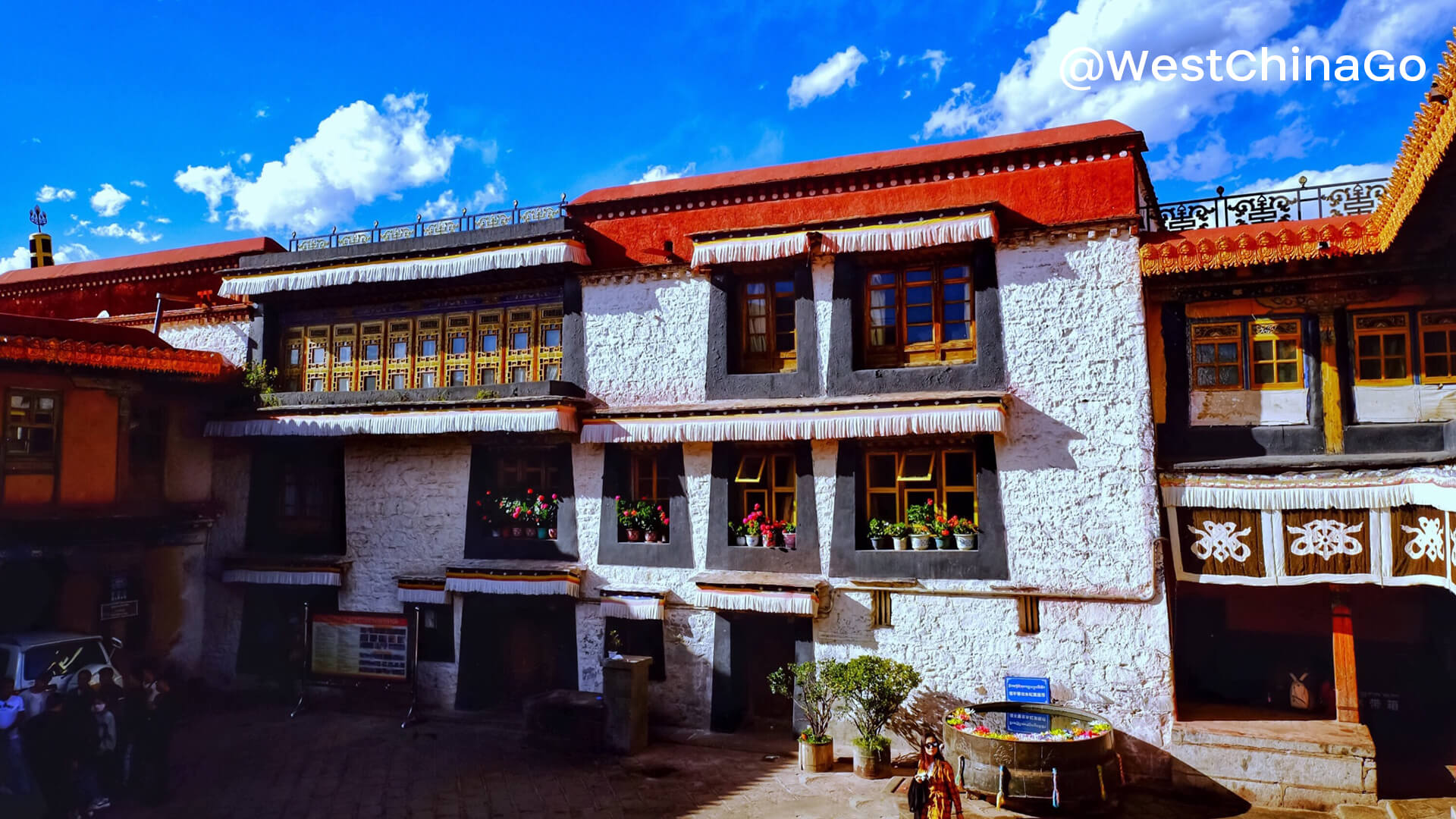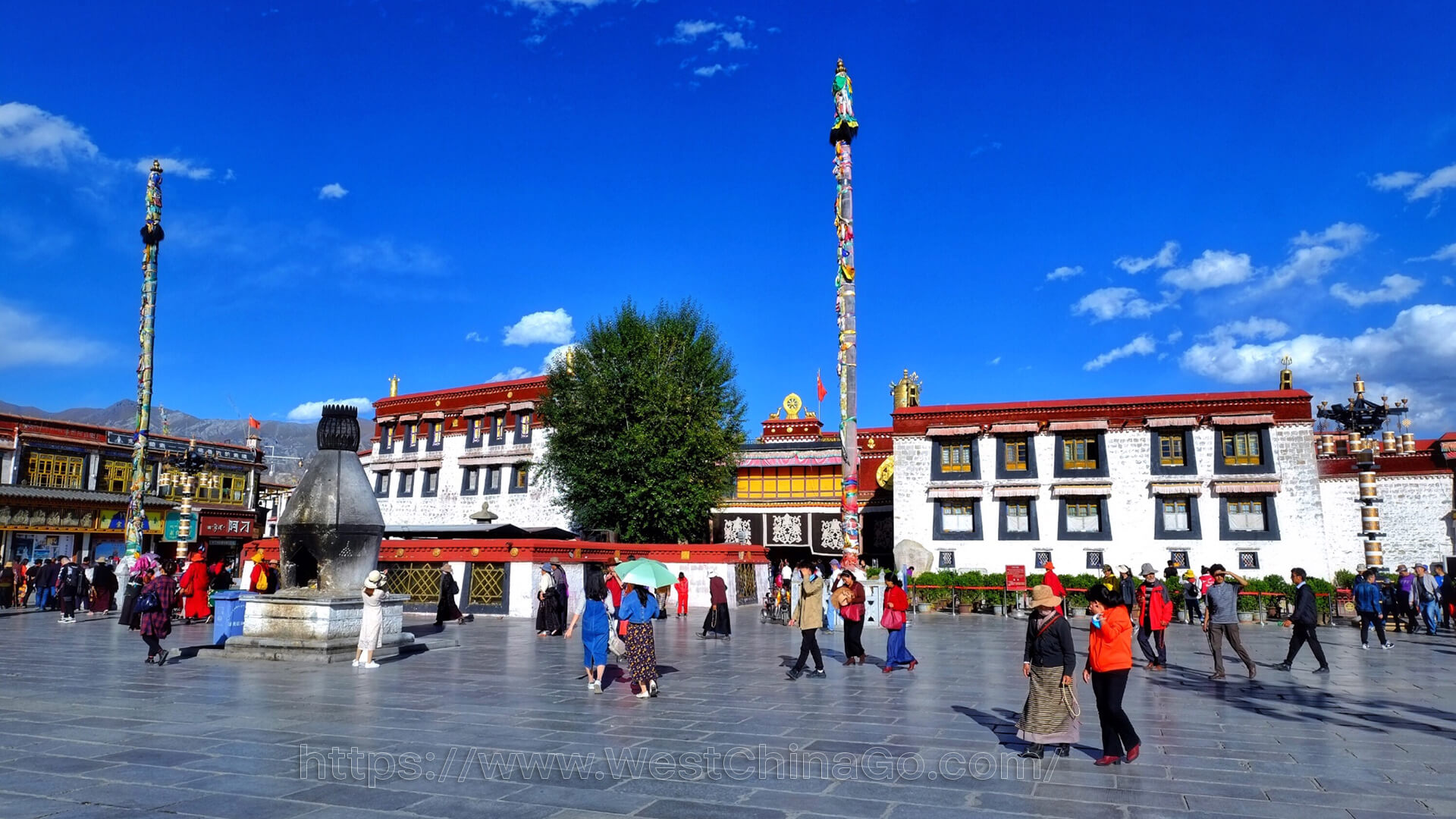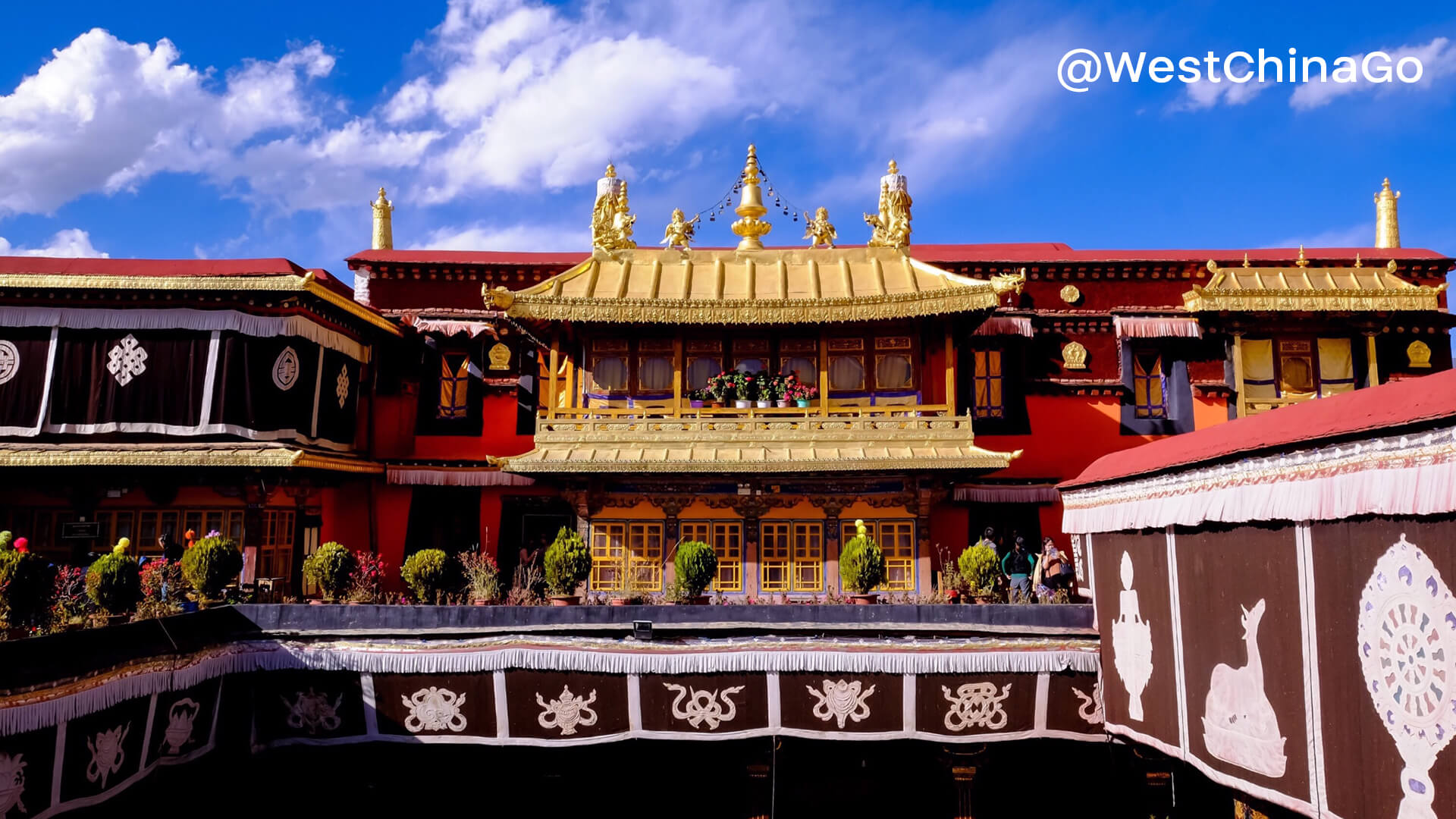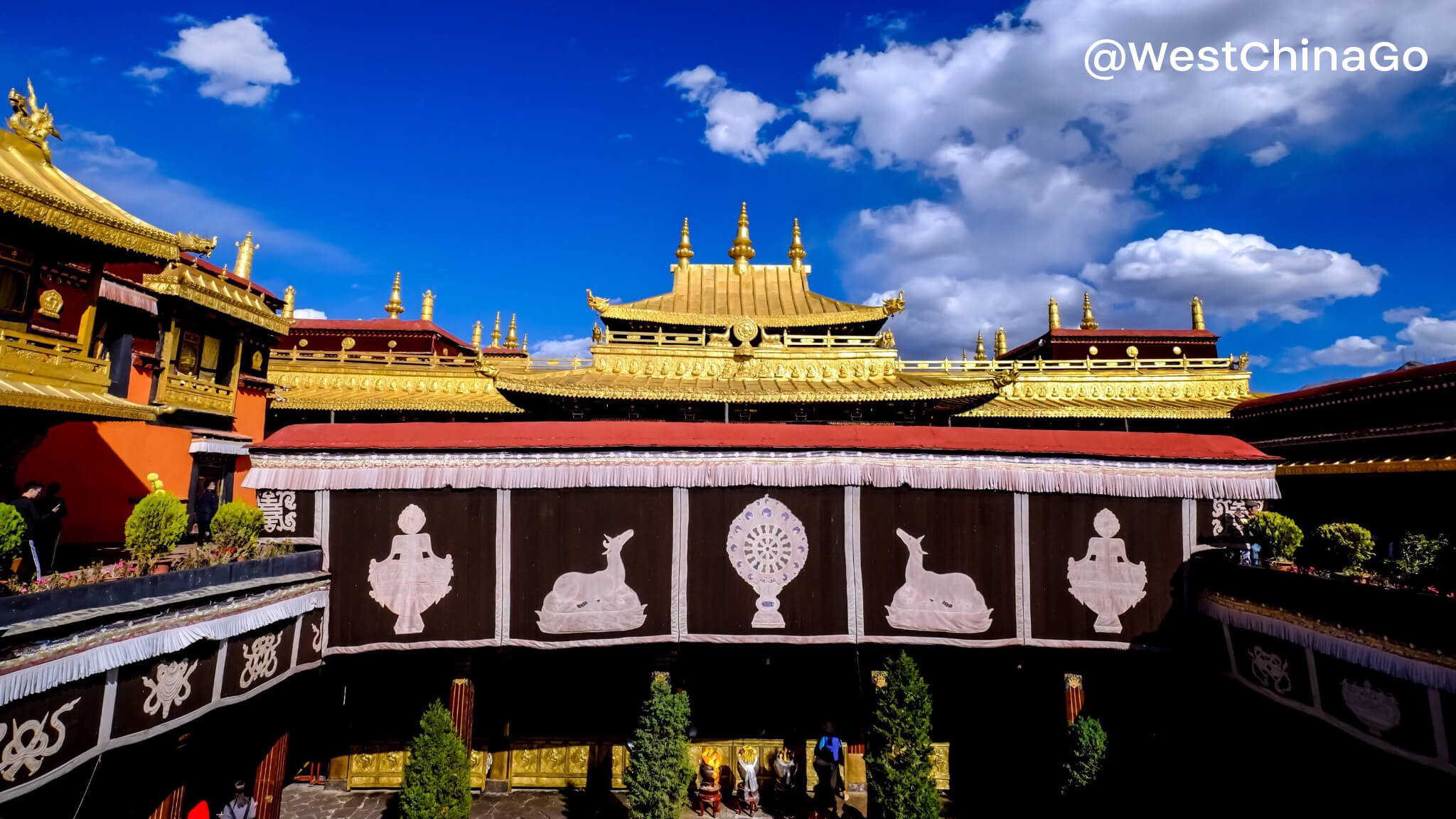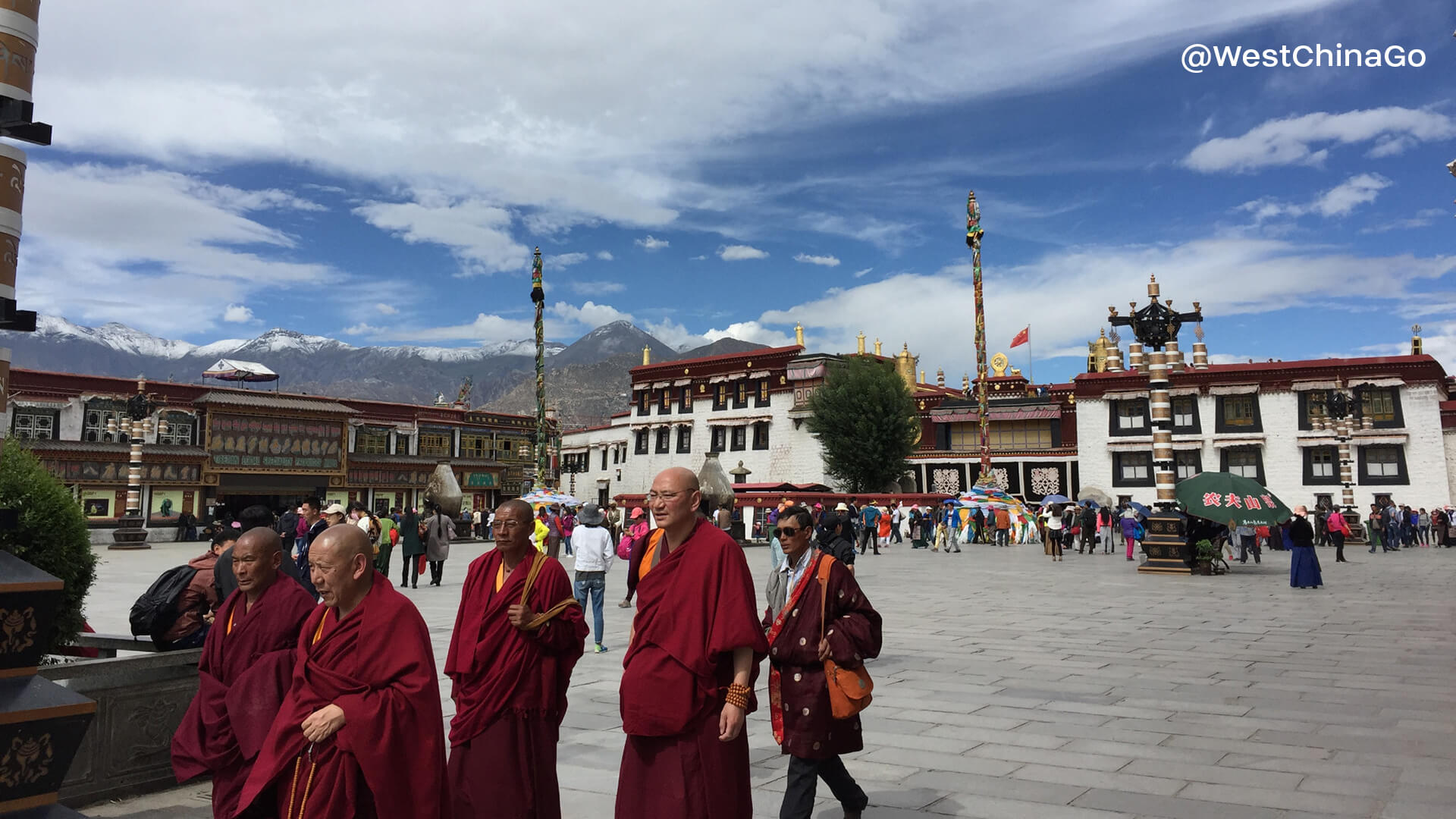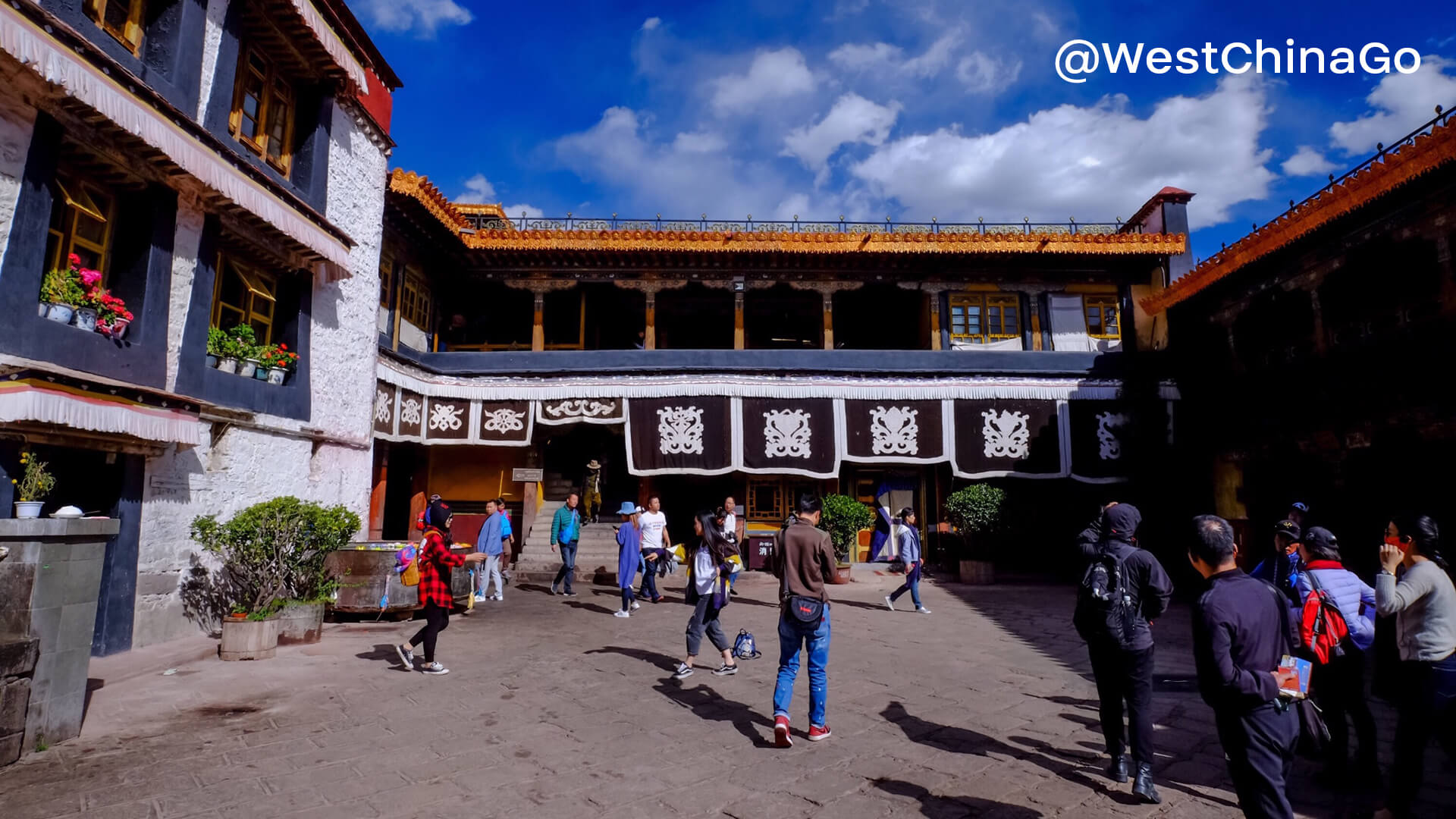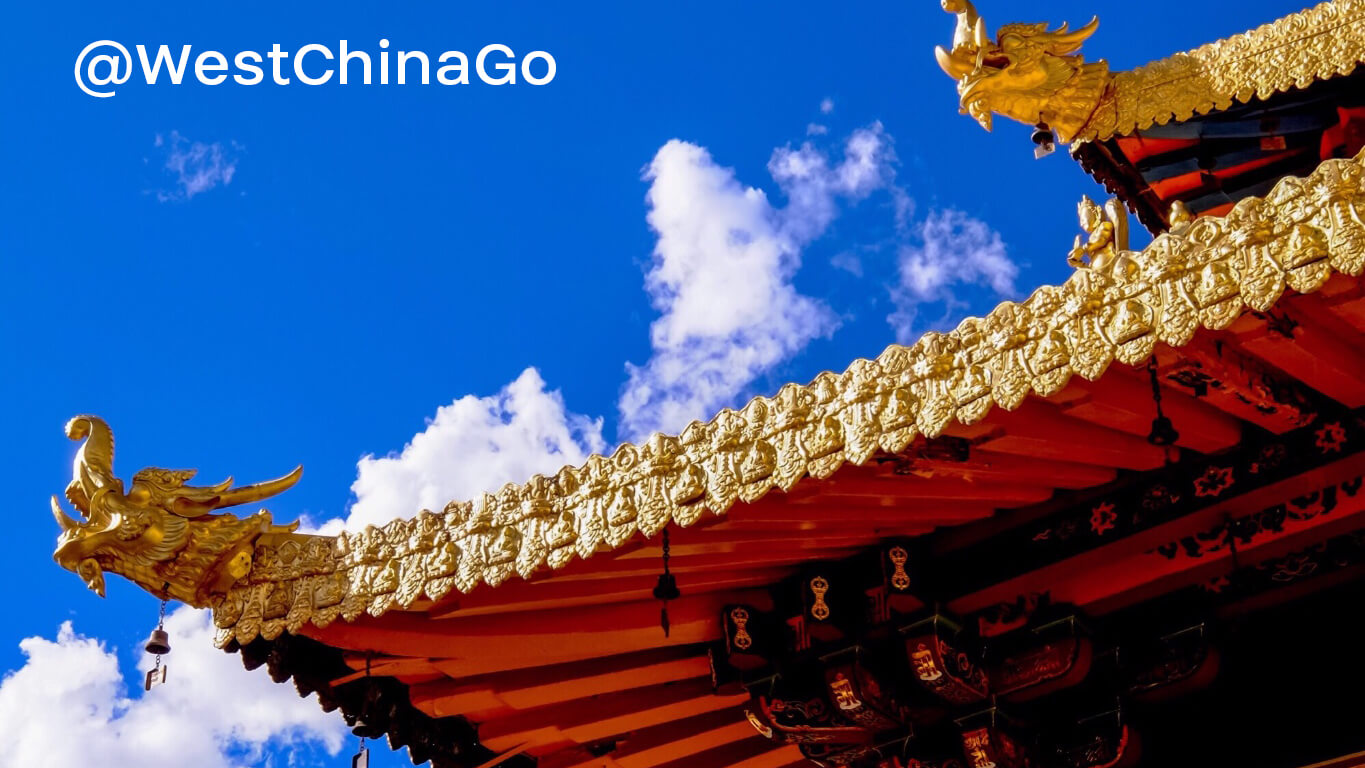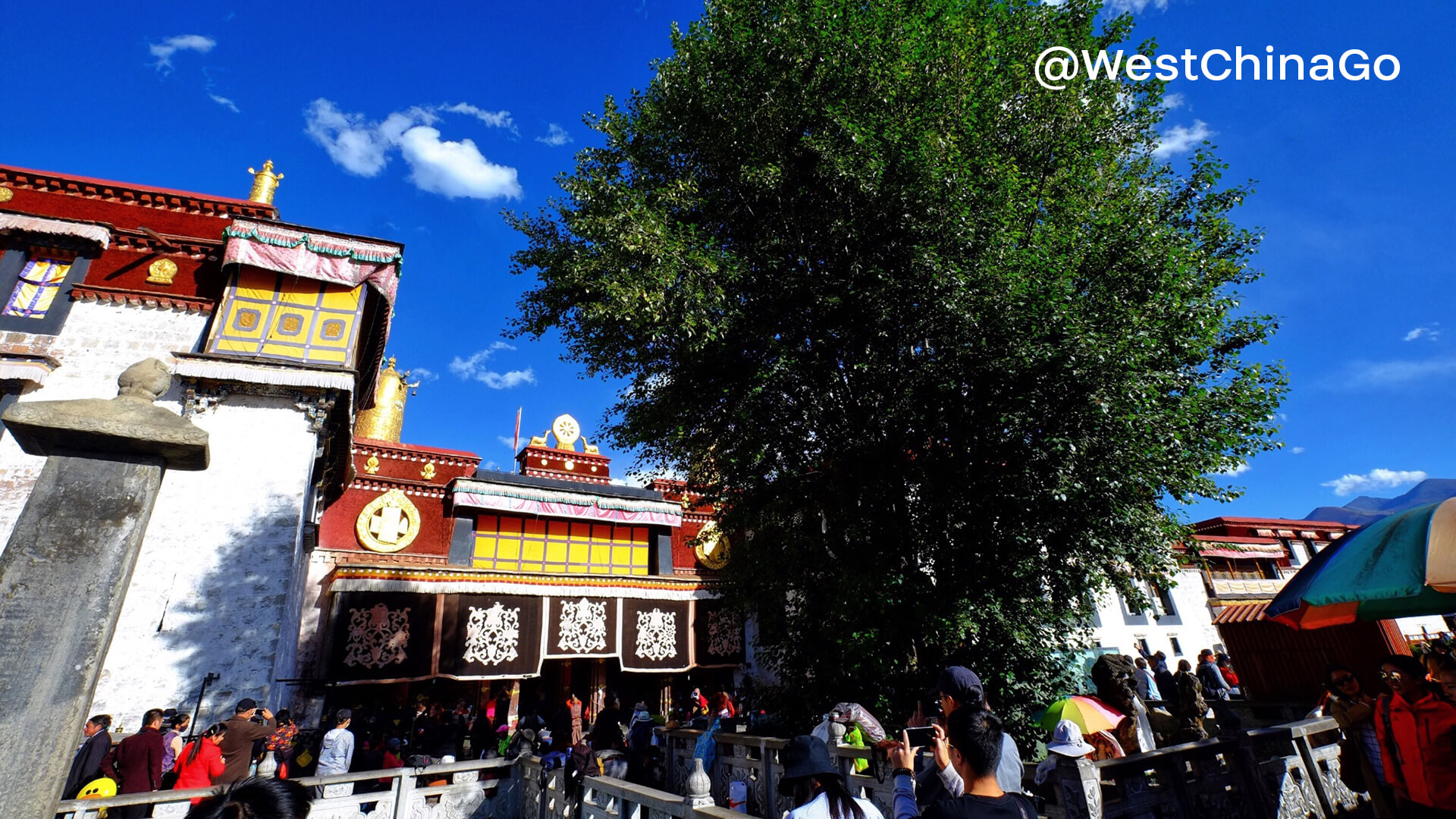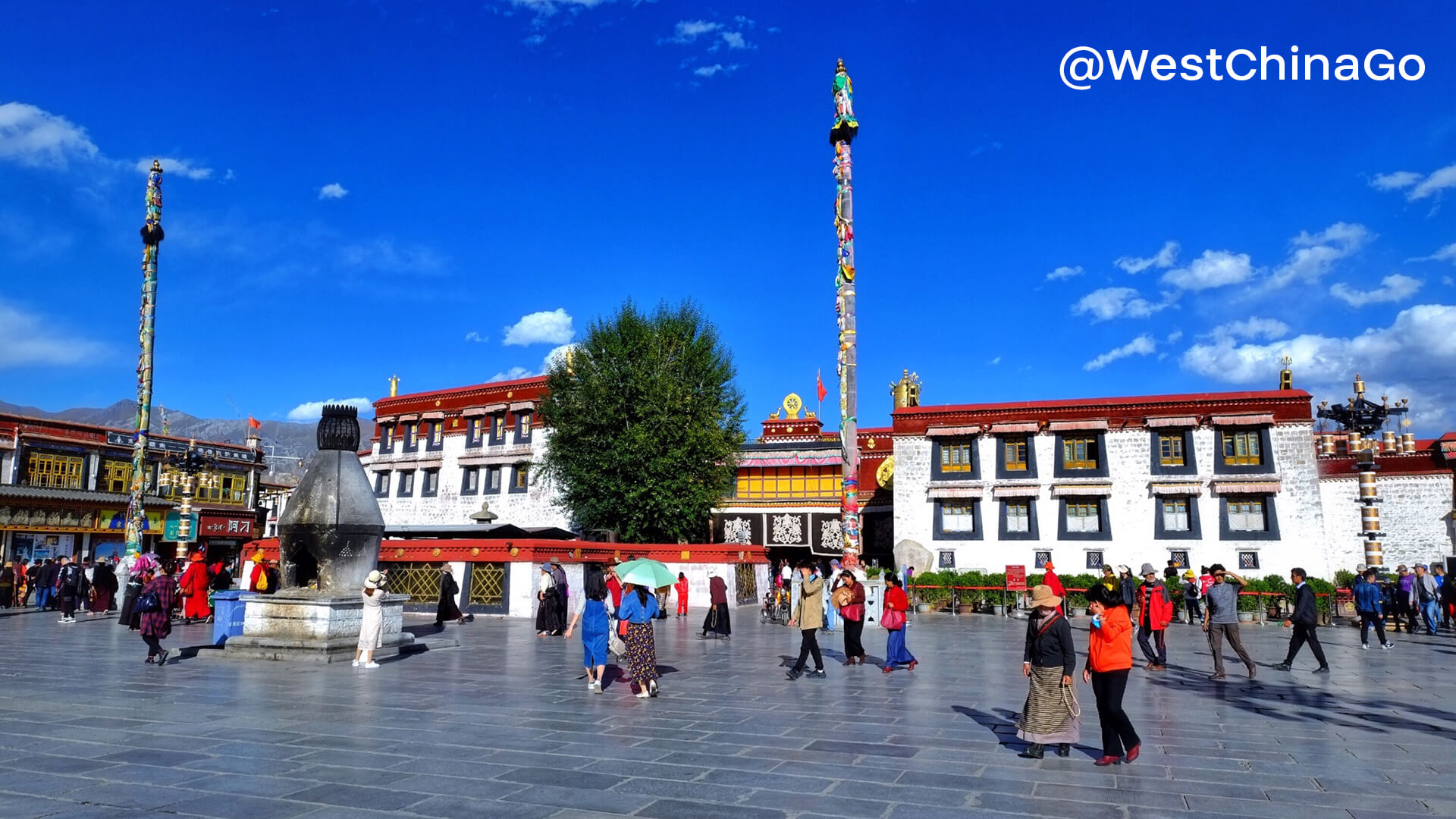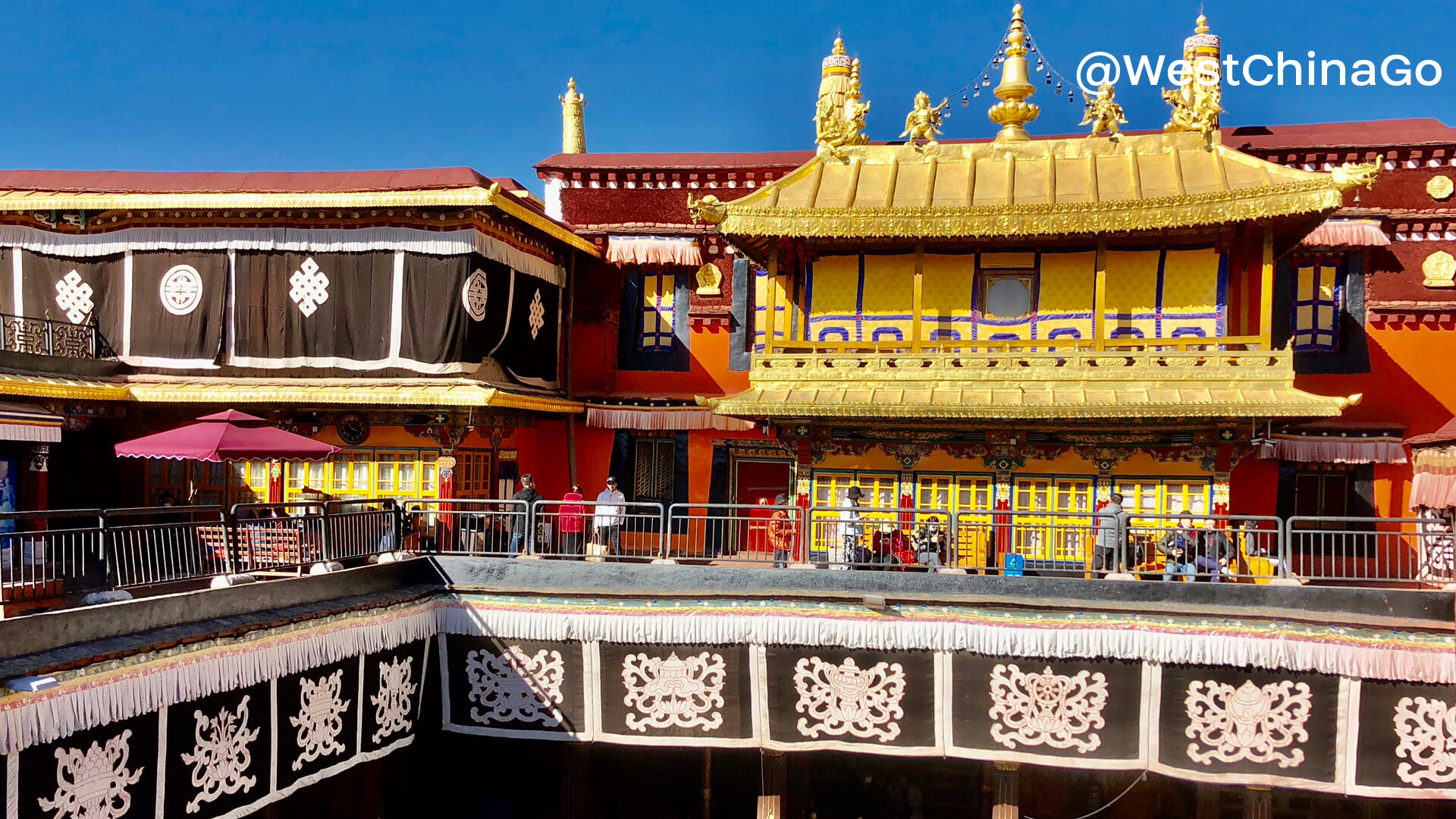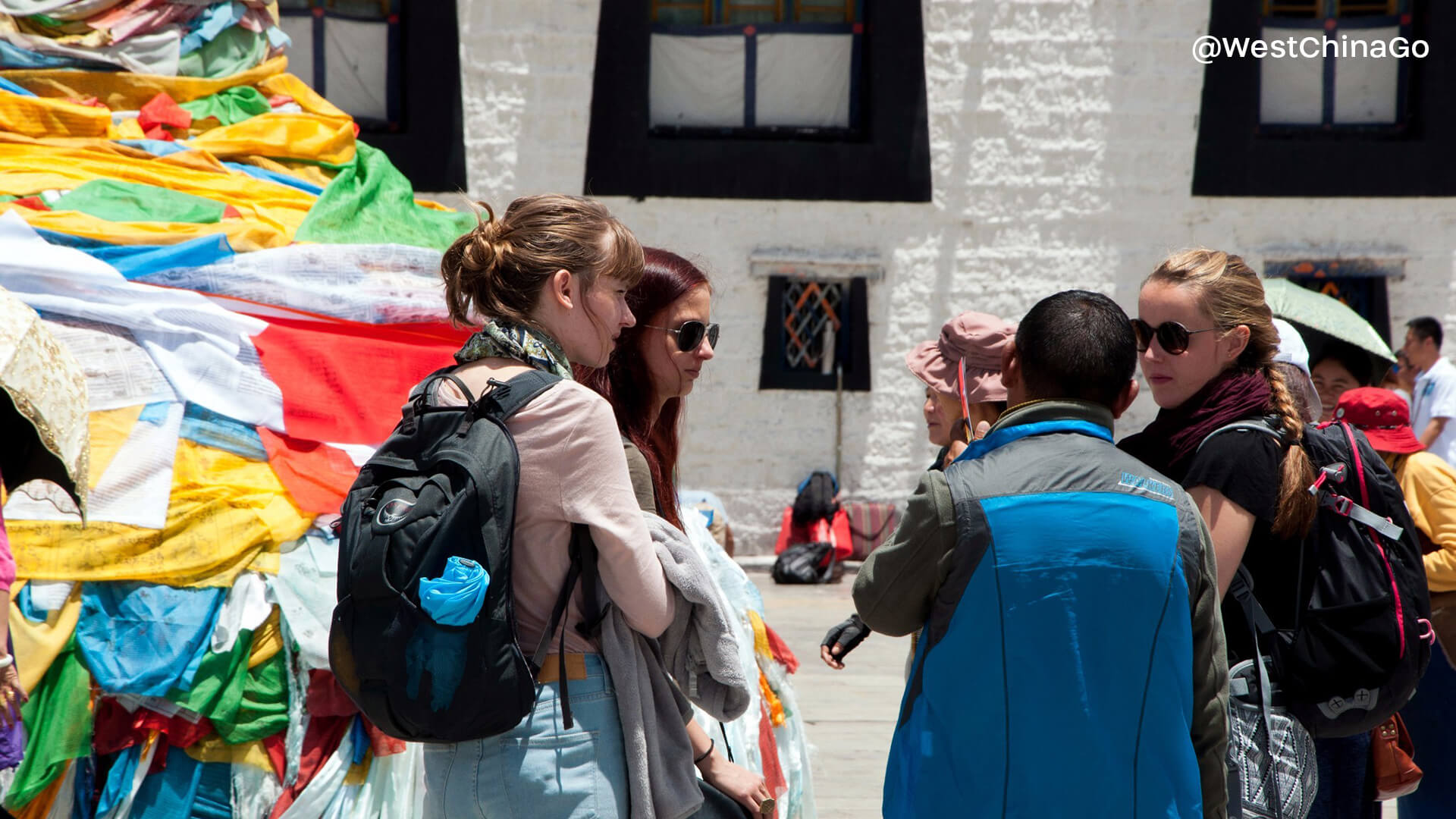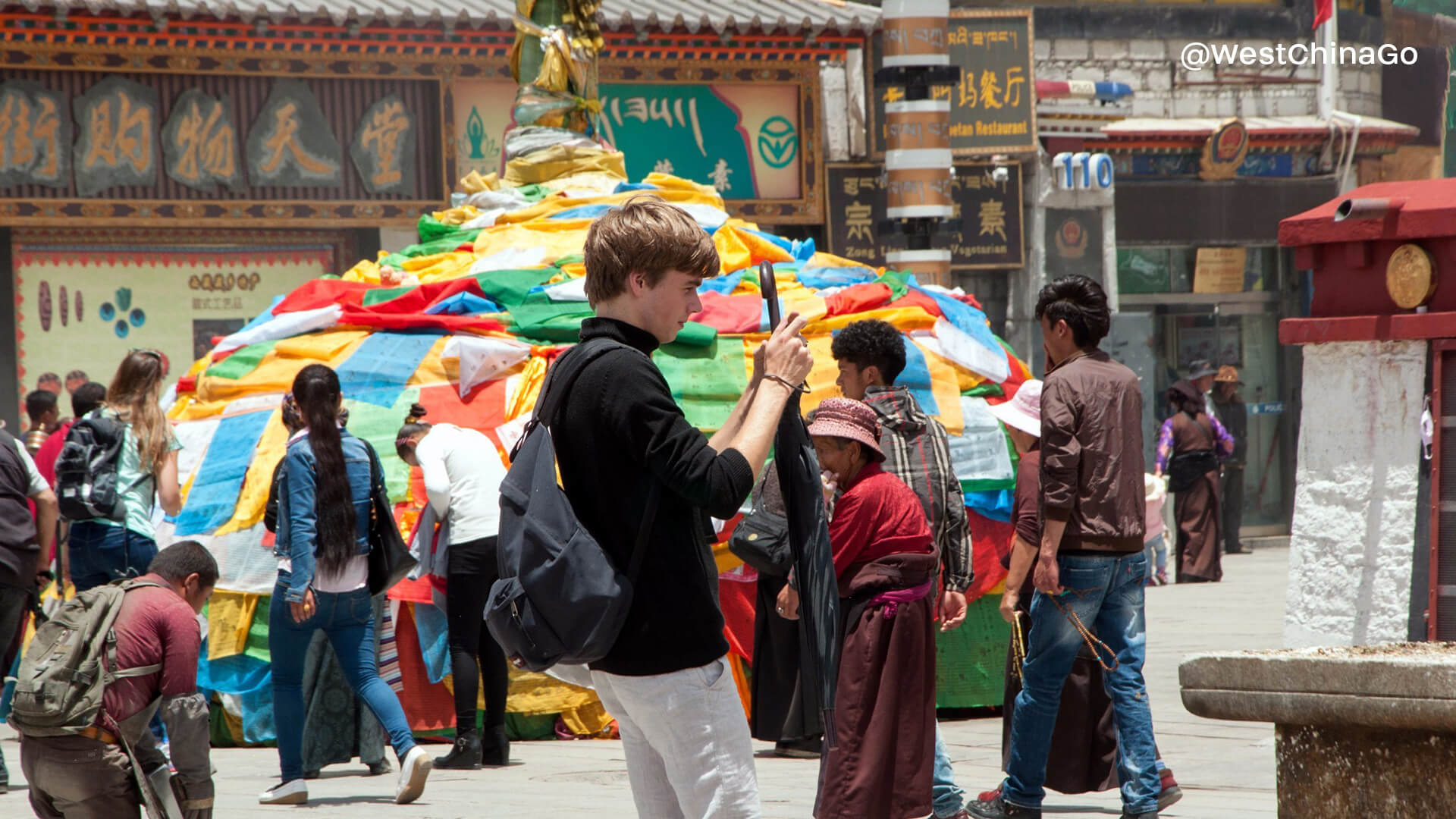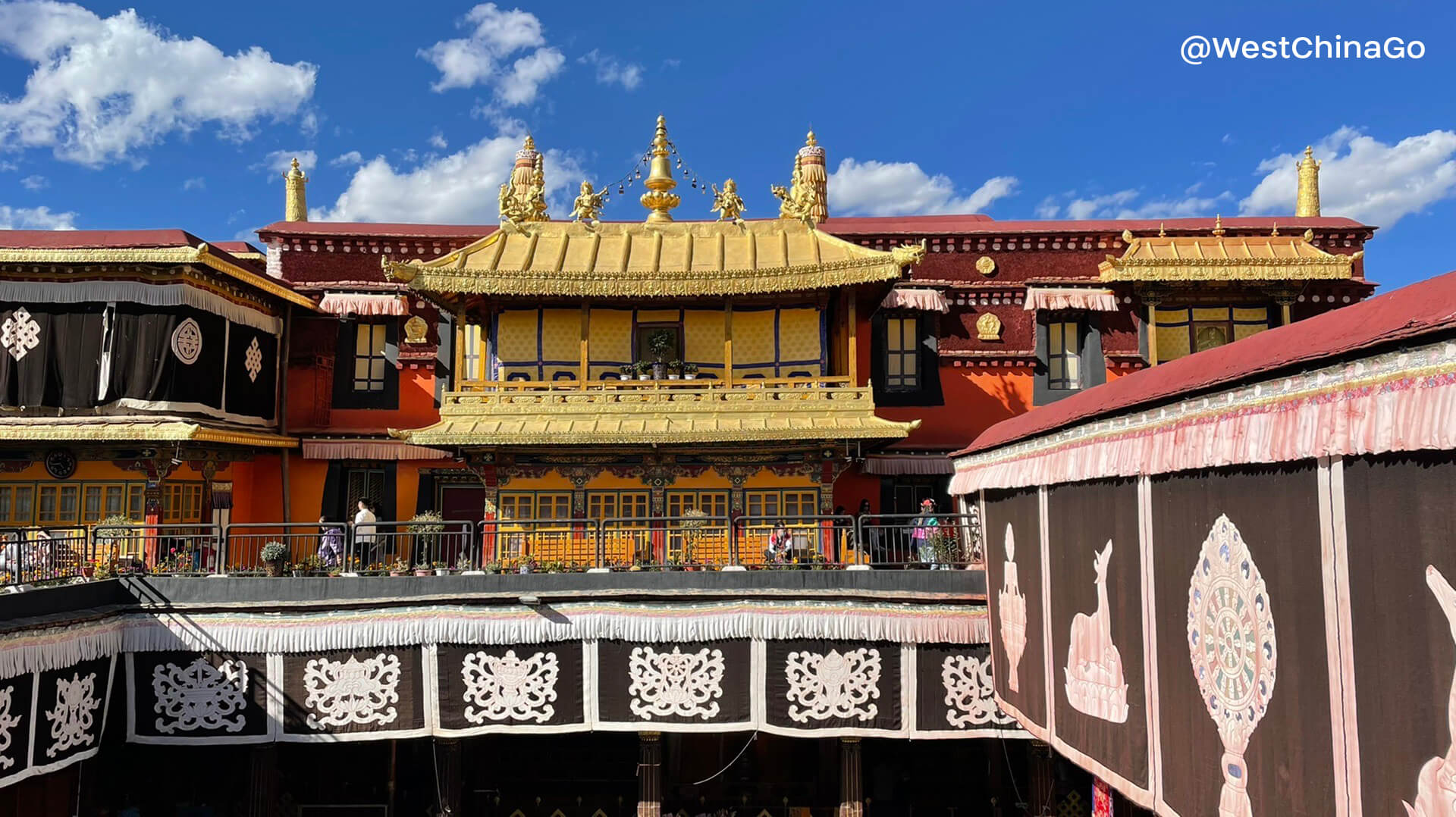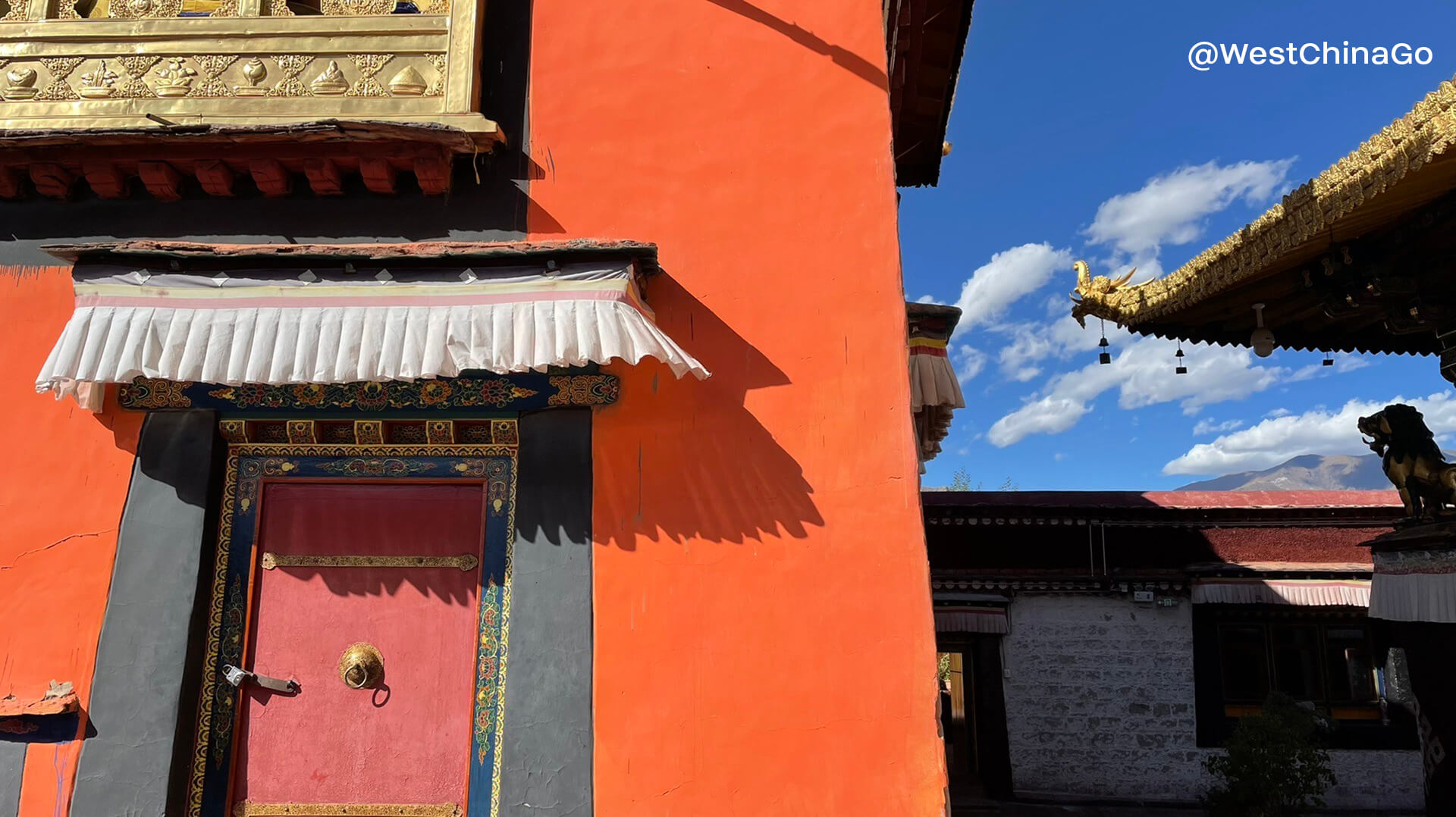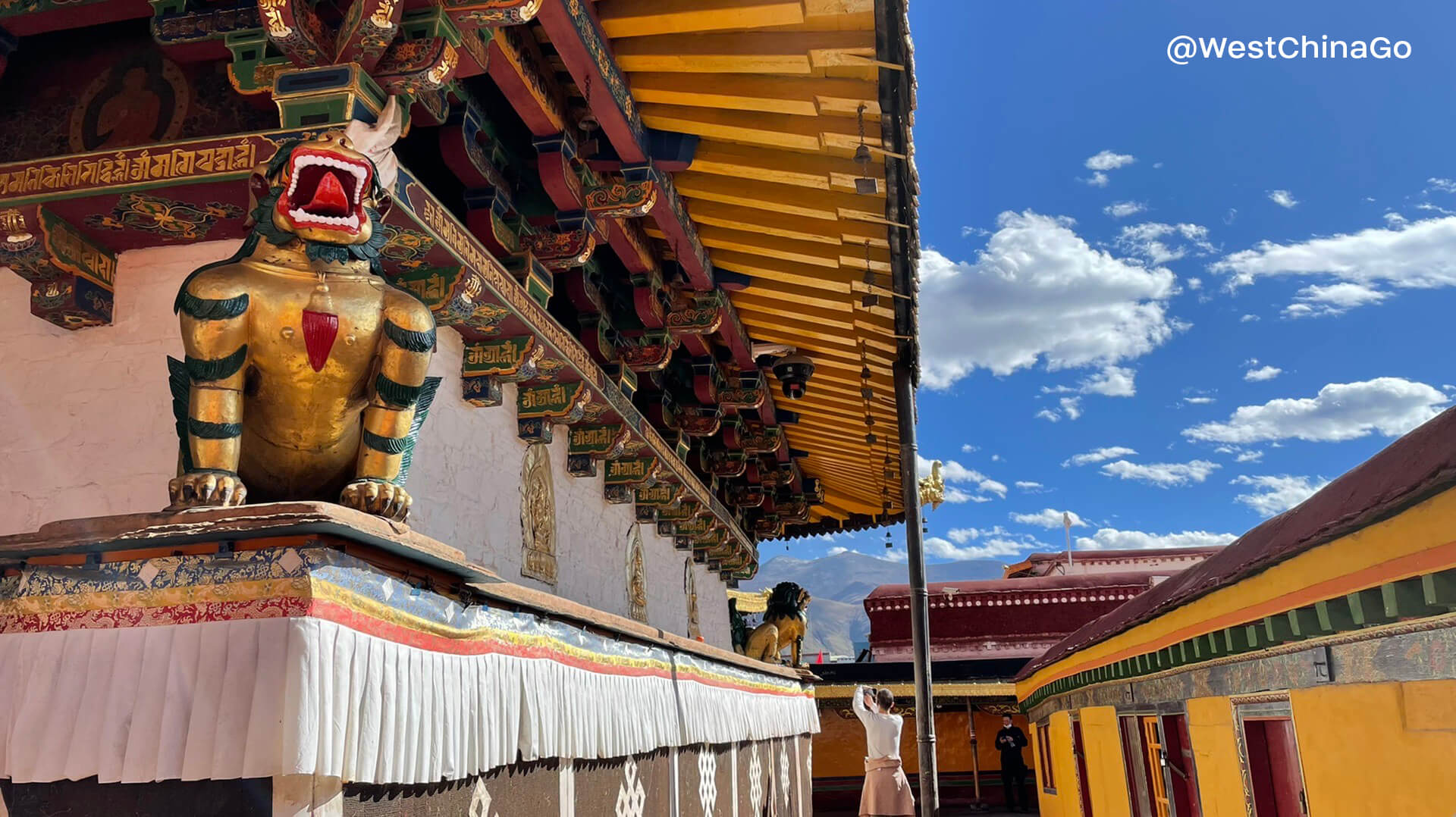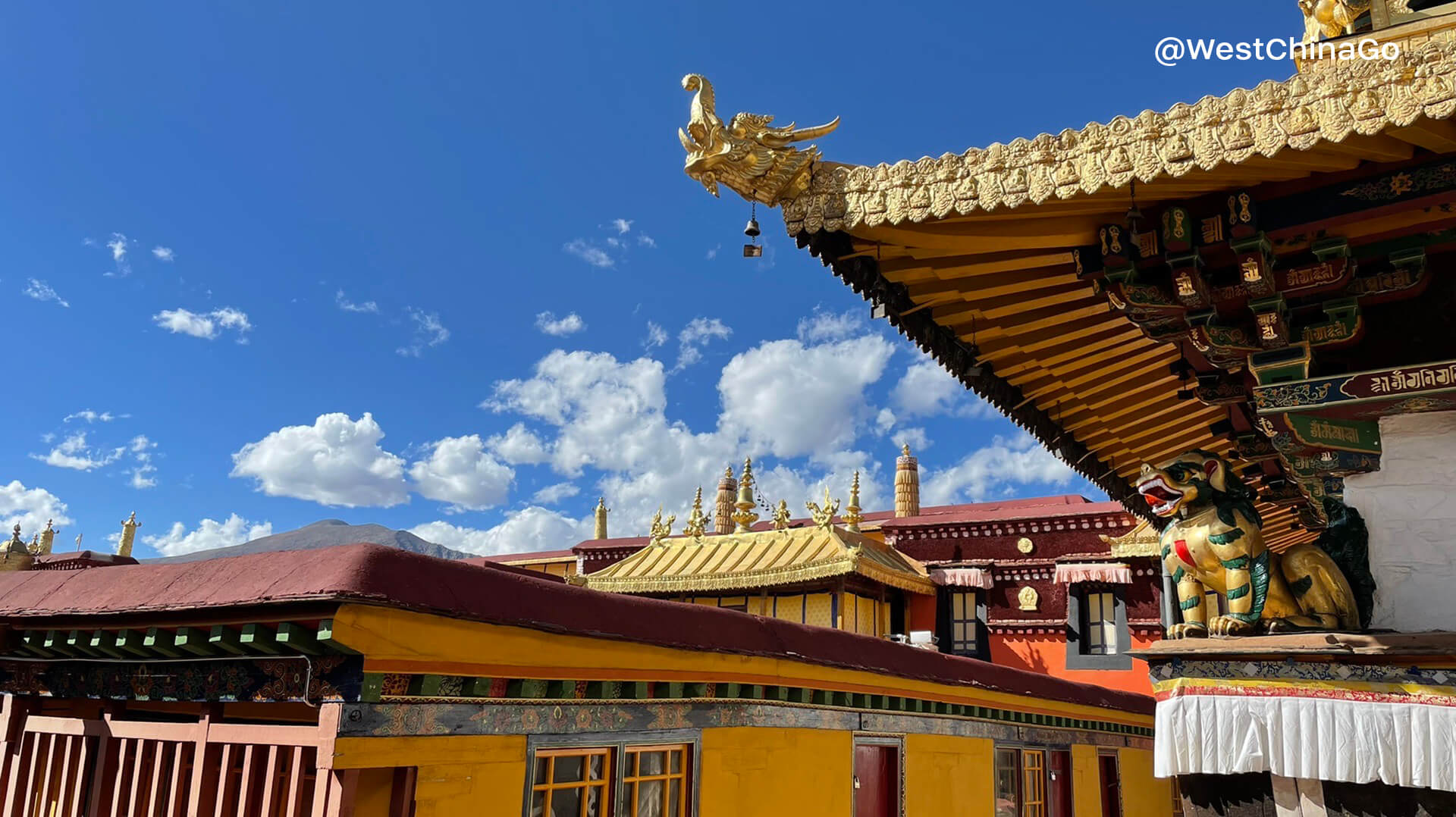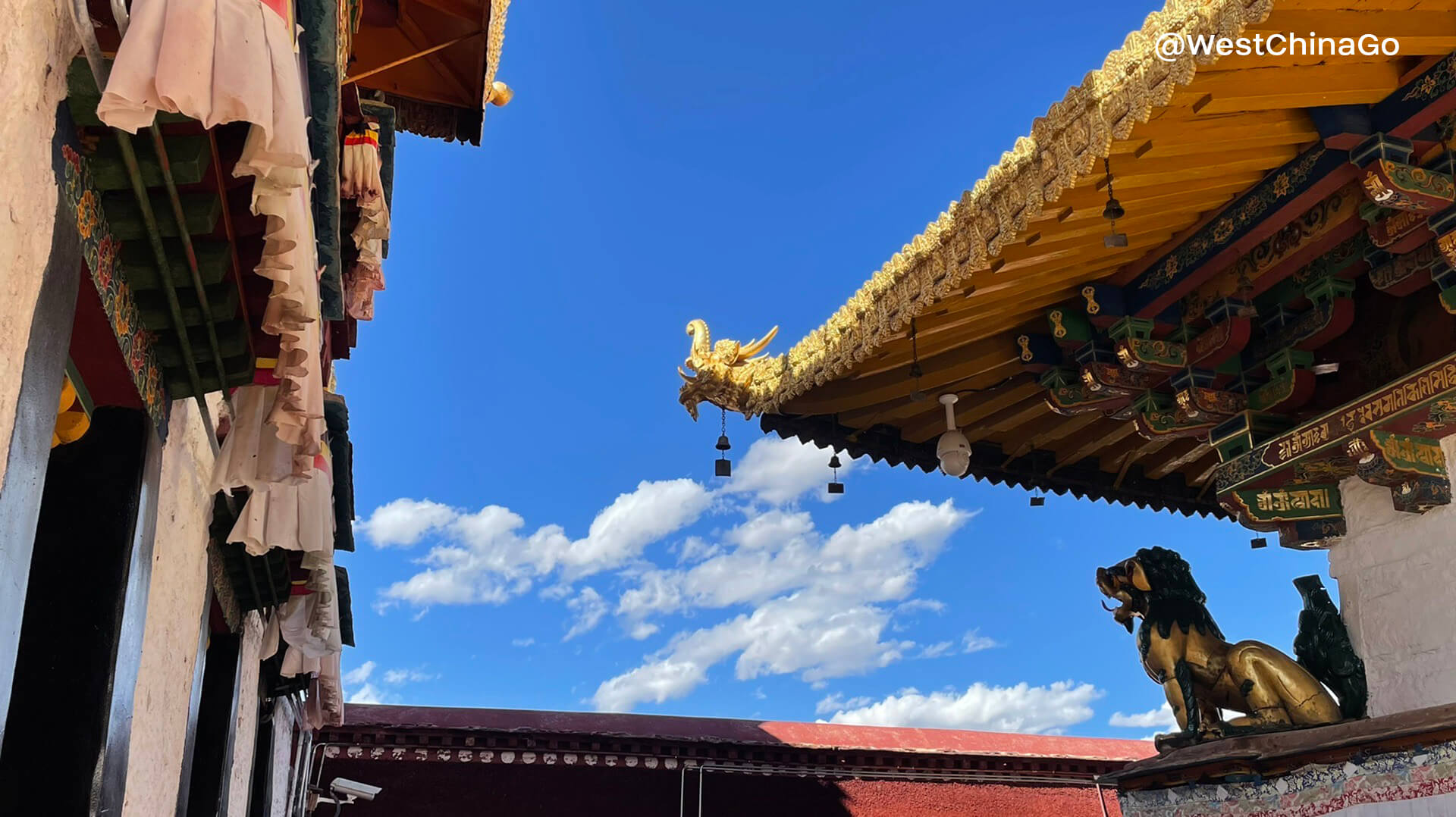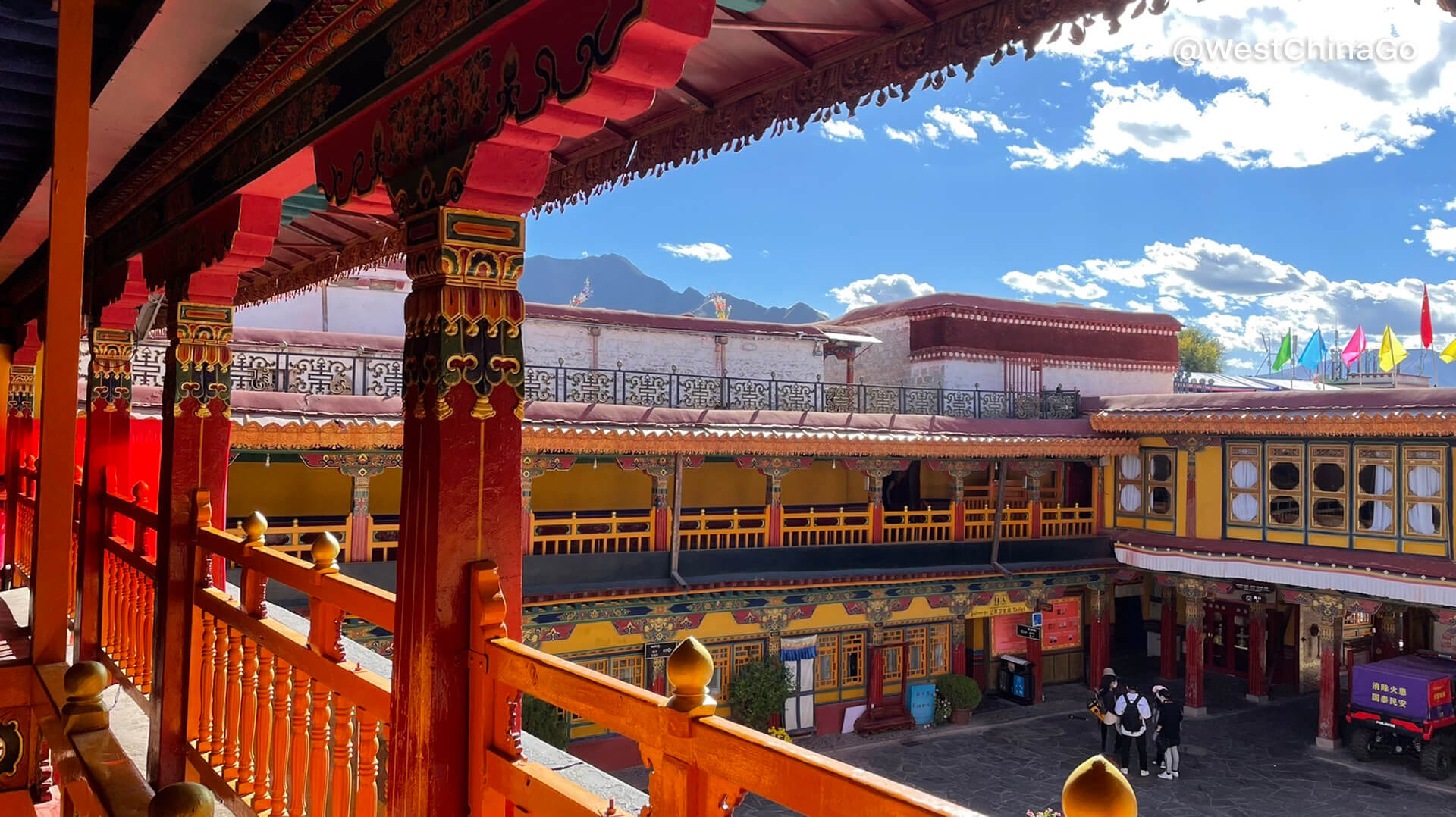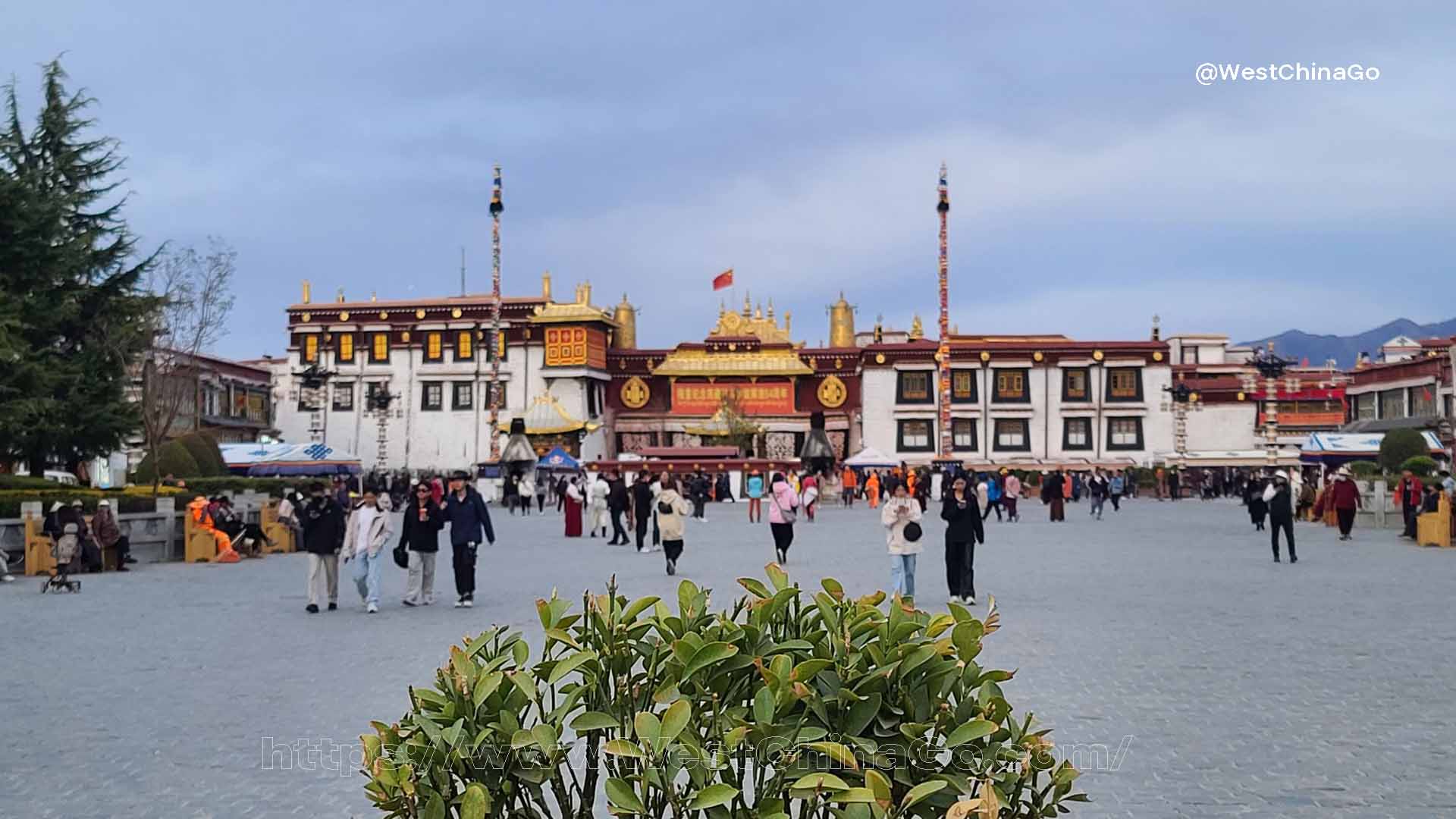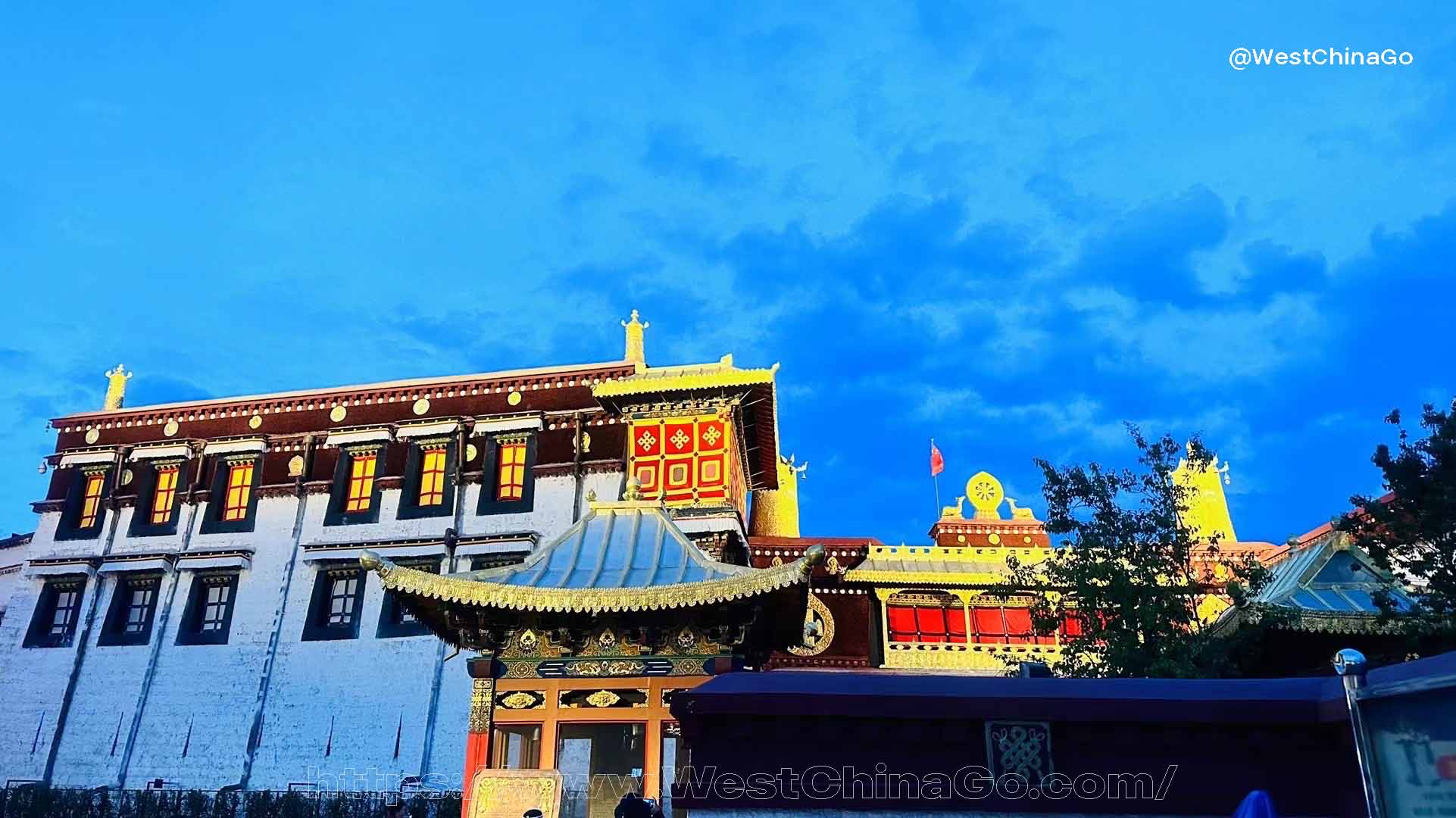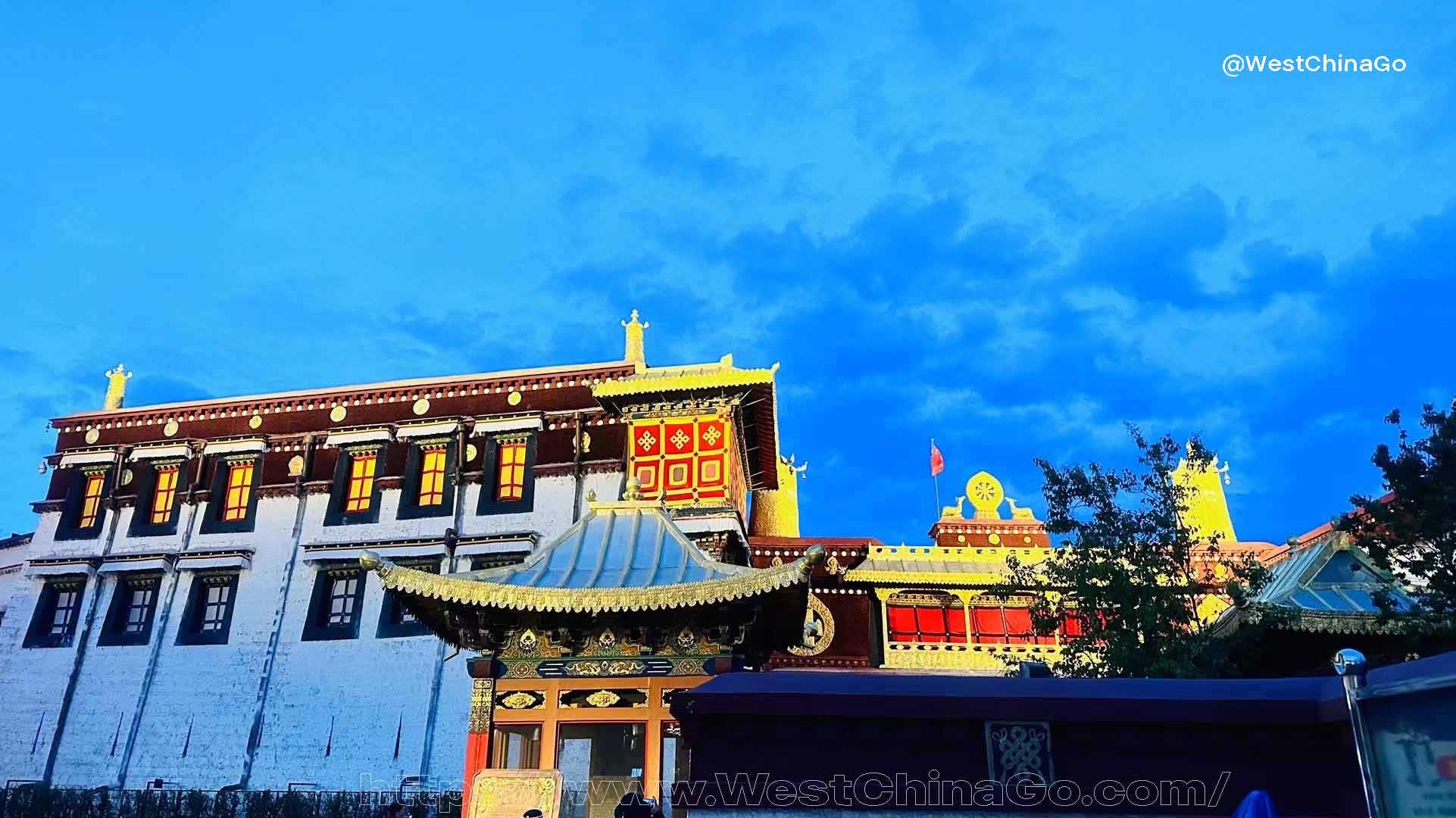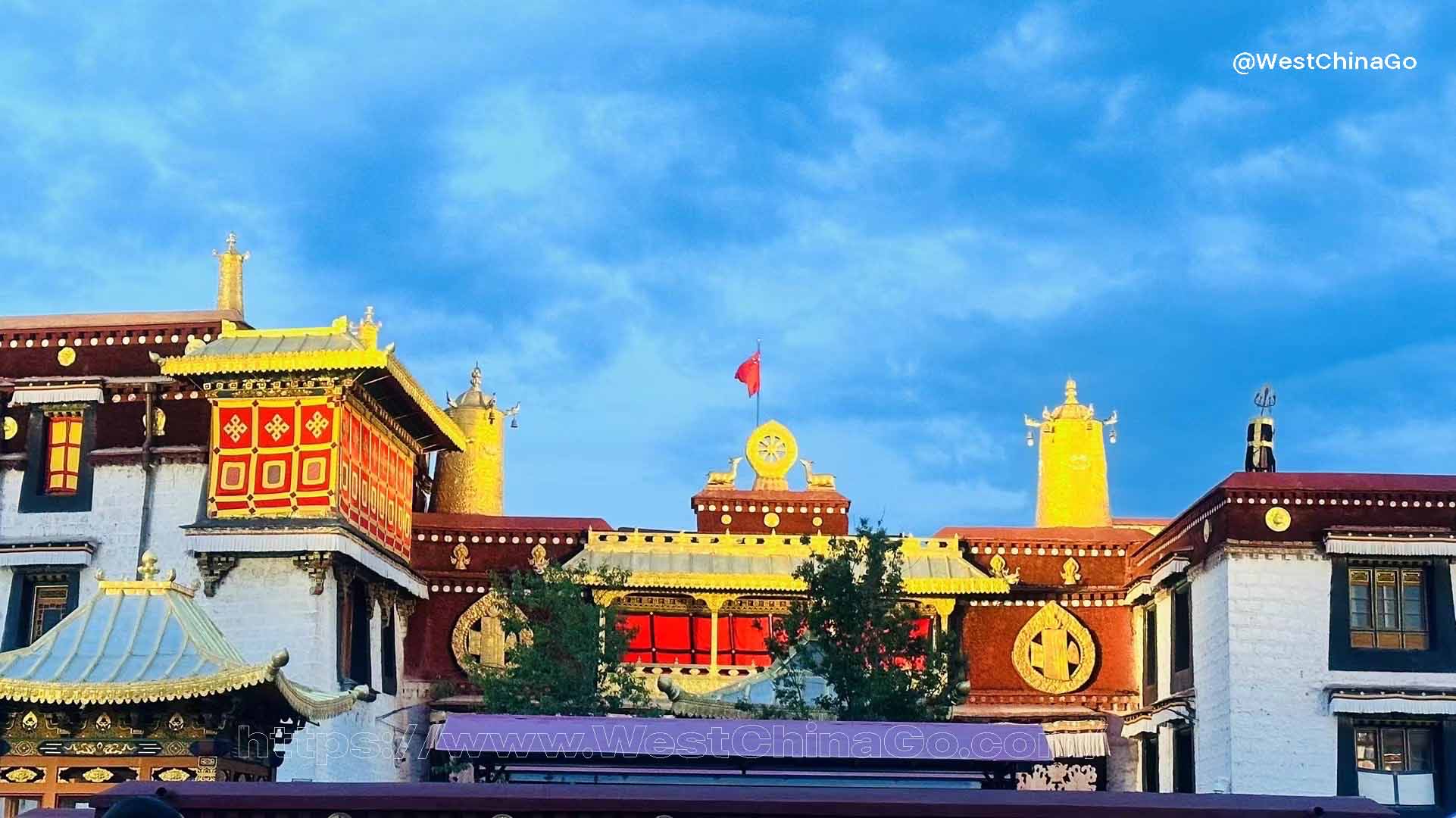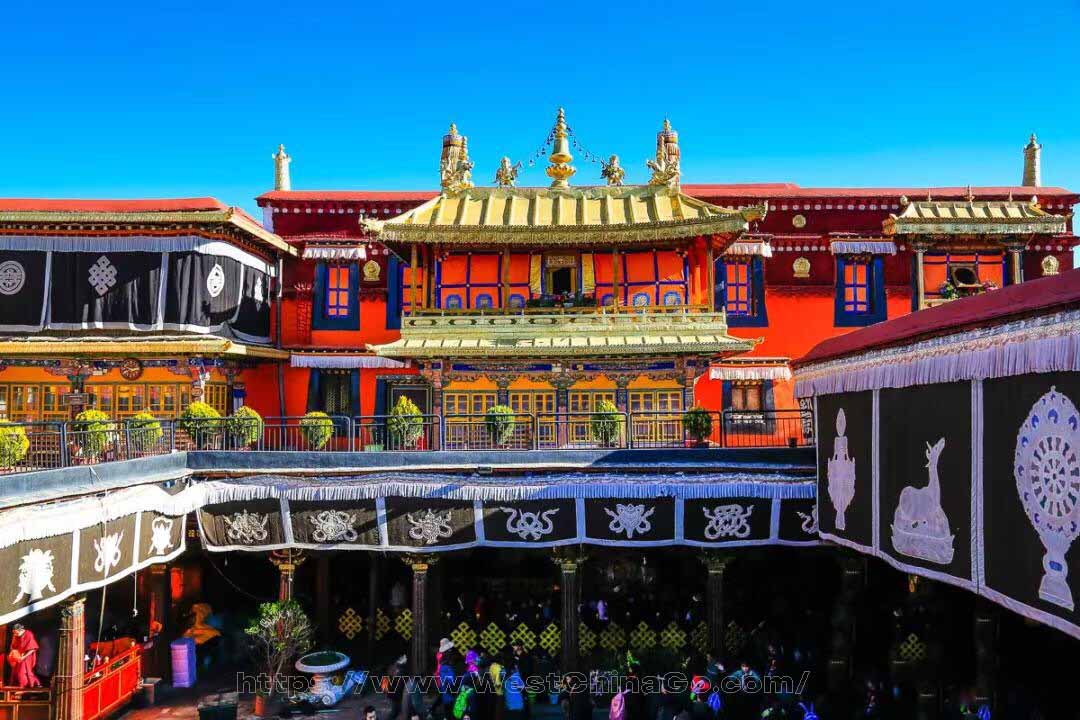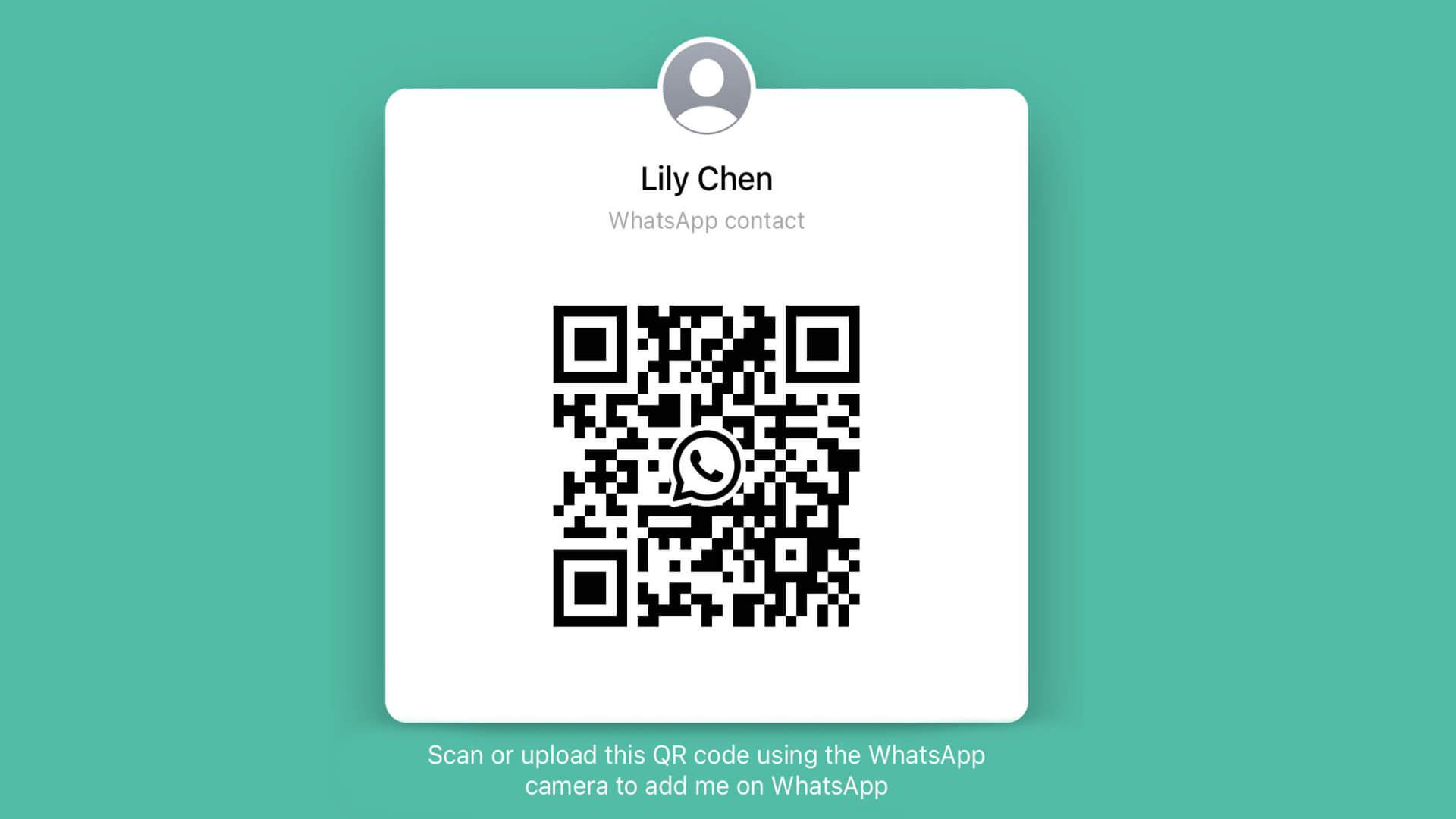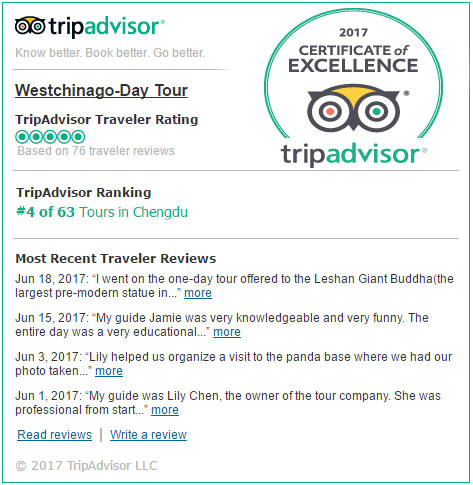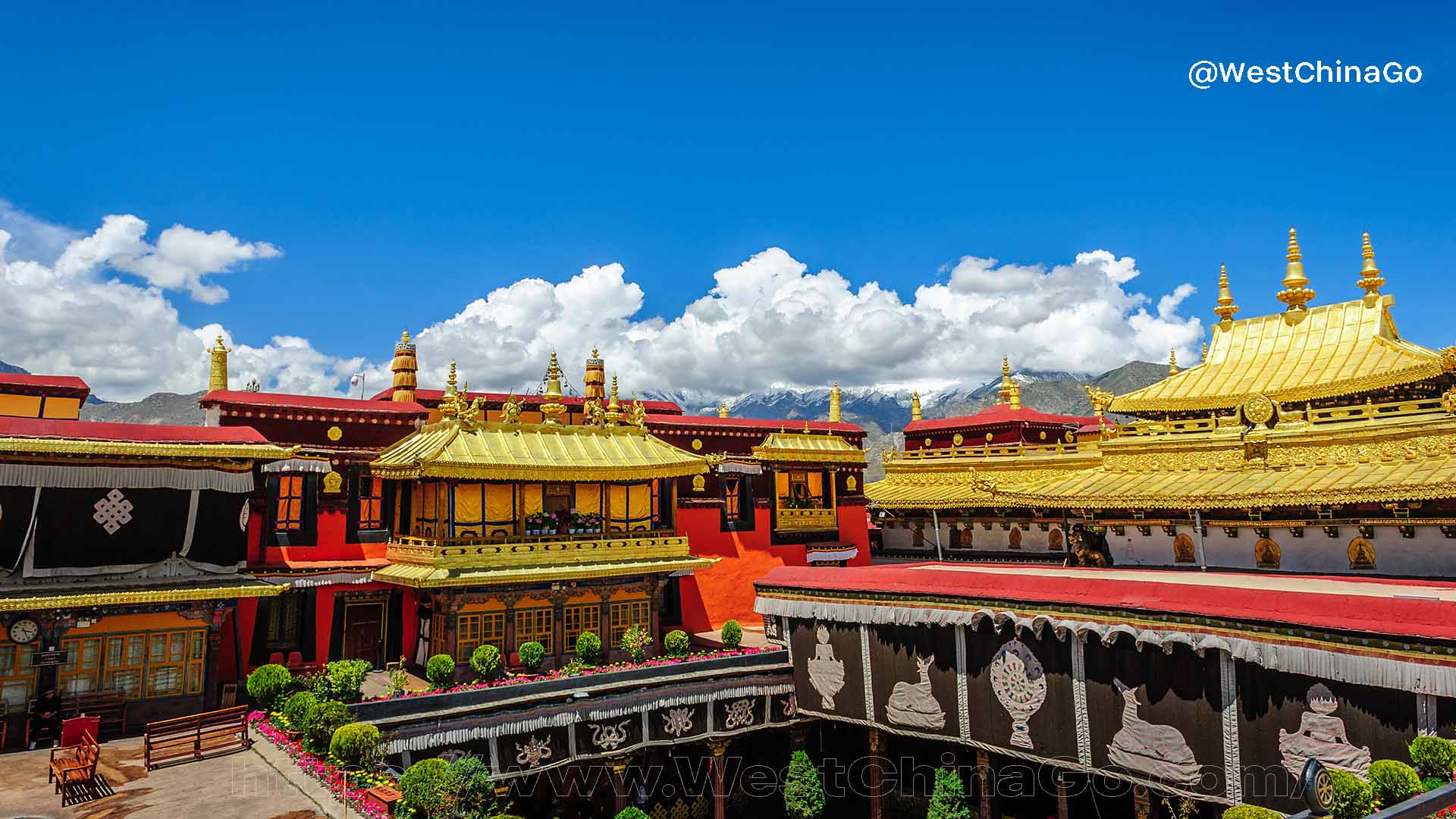
Jokhang Temple
- Chinese name: 大昭寺
- Location: Lhasa, Tibet Autonomous Region
- Affiliation: Tang Dynasty to Qing Dynasty
- Area: more than 25,100 square meters
- Protection level: the first batch of national key cultural relics protection units
- Ticket price: 98 yuan
- Opening hours: 12:00-18:30; stop admission time: 18:30 (January 1st-December 31st Monday-Sunday)

Jokhang Temple
Explore Jokhang Temple: The Spiritual Heart of Lhasa
A Sacred Icon of Tibetan Buddhism
Nestled in the vibrant heart of Lhasa, Jokhang Temple stands as the holiest site in Tibetan Buddhism. Built in the 7th century by King Songtsen Gampo, this revered temple draws pilgrims from across the Tibetan Plateau who come to prostrate, pray, and circle its sacred grounds. Its golden roof glistening in the sun is a beacon of faith and devotion, symbolizing Tibet’s deep spiritual roots.
A Treasure Trove of History and Art
Jokhang Temple is more than a place of worship—it is a living museum of Tibetan culture. Within its ancient walls, visitors can marvel at intricate murals, age-old statues, and the revered Jowo Rinpoche, a golden statue of Buddha Shakyamuni. Each artifact tells a story of Tibet’s rich spiritual traditions and its enduring cultural heritage.
A Vibrant Hub of Tibetan Life
Located at the center of the bustling Barkhor Street, Jokhang Temple is surrounded by a lively atmosphere. Pilgrims clad in traditional attire walk the kora (circumambulation path), spinning prayer wheels and chanting mantras. The surrounding market offers a unique chance to explore Tibetan handicrafts, jewelry, and local delicacies, making it a perfect blend of culture and spirituality.
An Unmissable Experience in Tibet
Visiting Jokhang Temple is a transformative experience. Whether you are drawn by its spiritual significance, fascinated by its architectural grandeur, or eager to immerse yourself in the vibrant life of Lhasa, this sacred site offers something for everyone.
Plan Your Journey to Jokhang Temple Today
Don’t miss the chance to witness the spiritual heart of Tibet. Jokhang Temple is a destination that inspires awe, reflection, and a deeper connection to the timeless traditions of this mystical land.
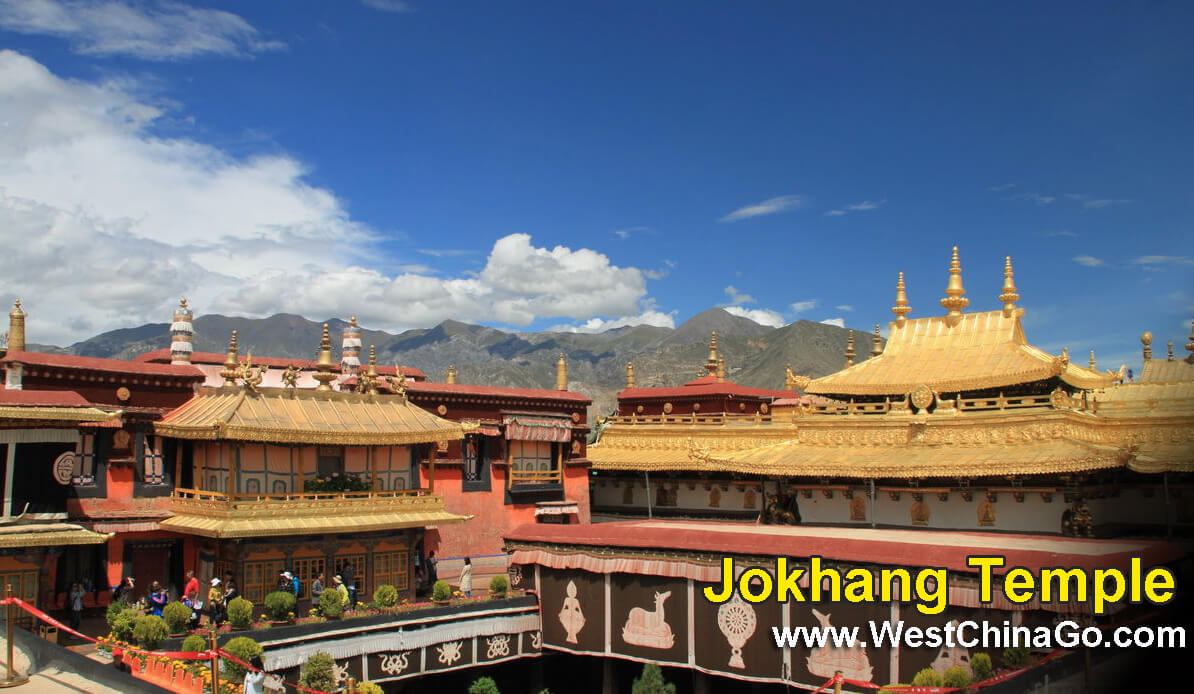
Jokhang Temple Video
Jokhang Temple Photo
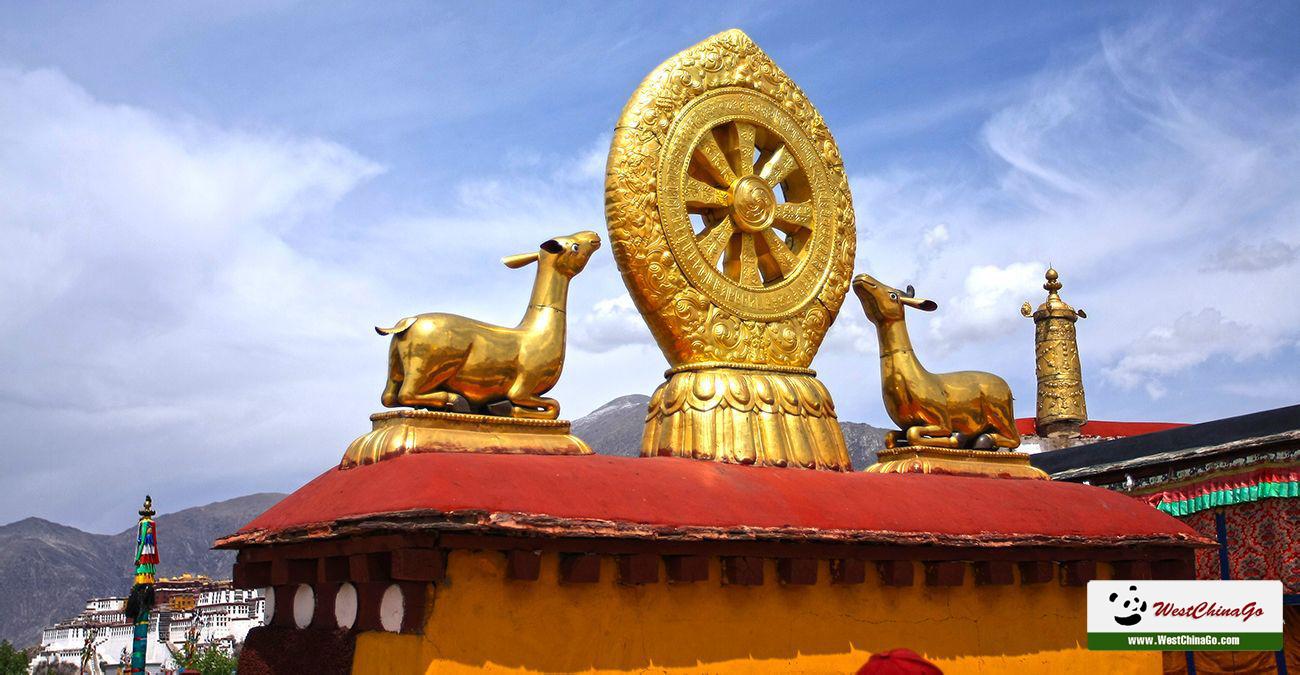
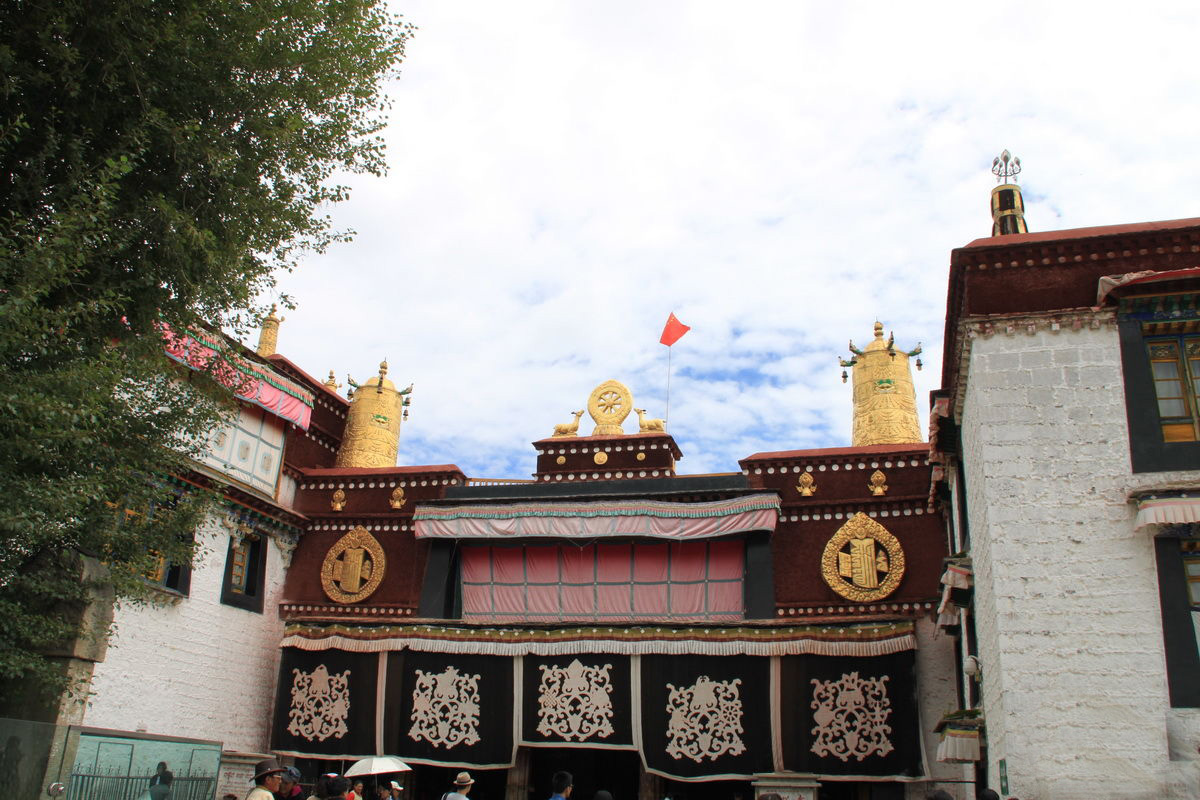
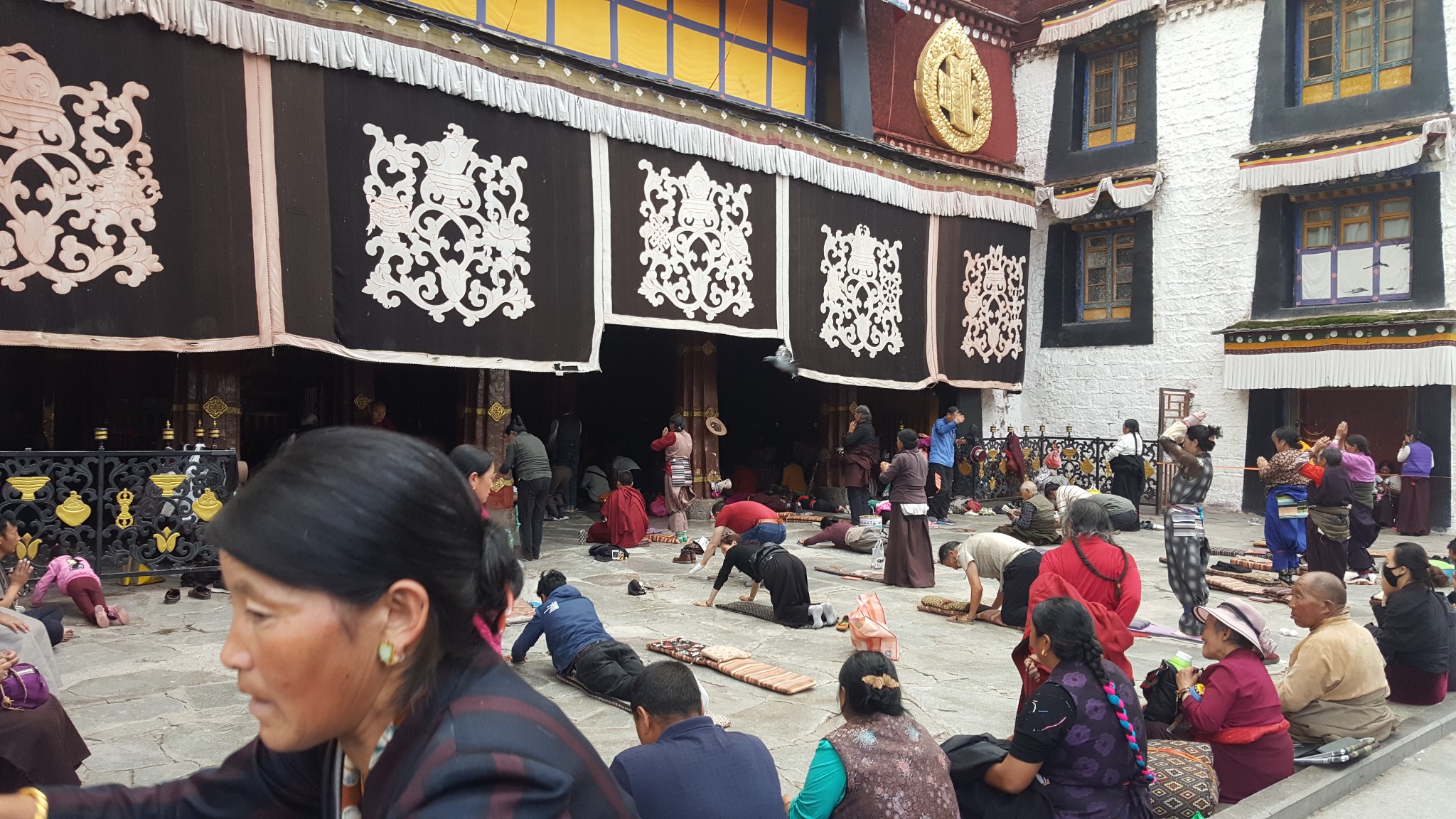
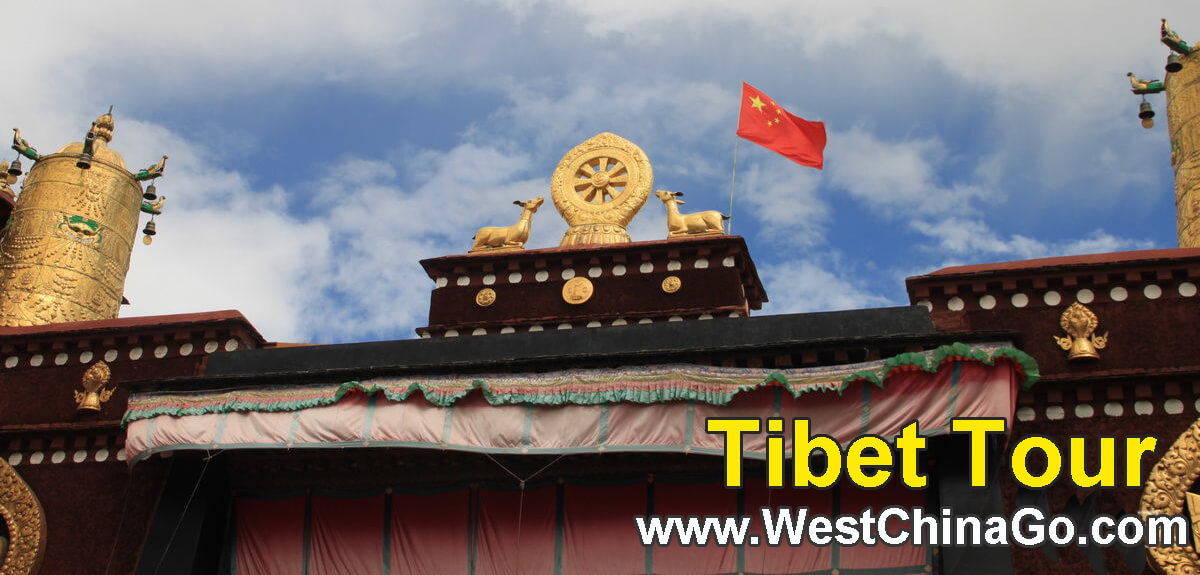
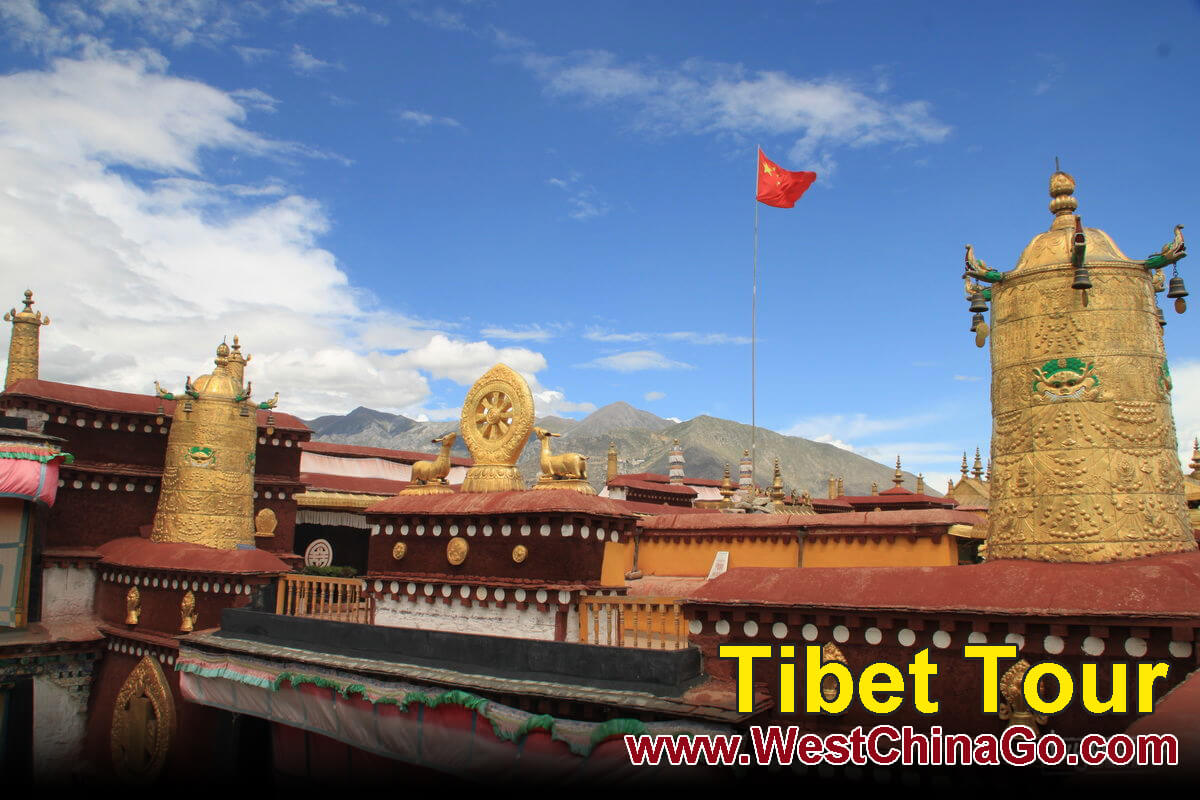
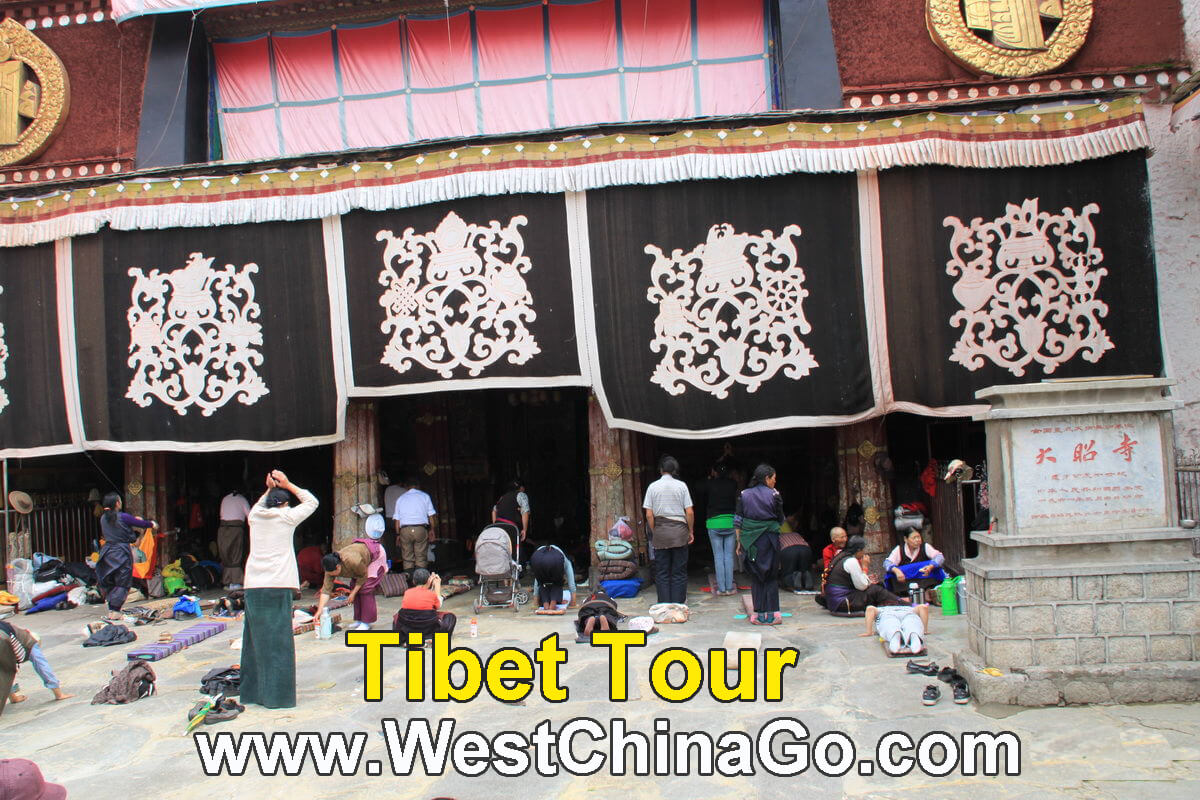
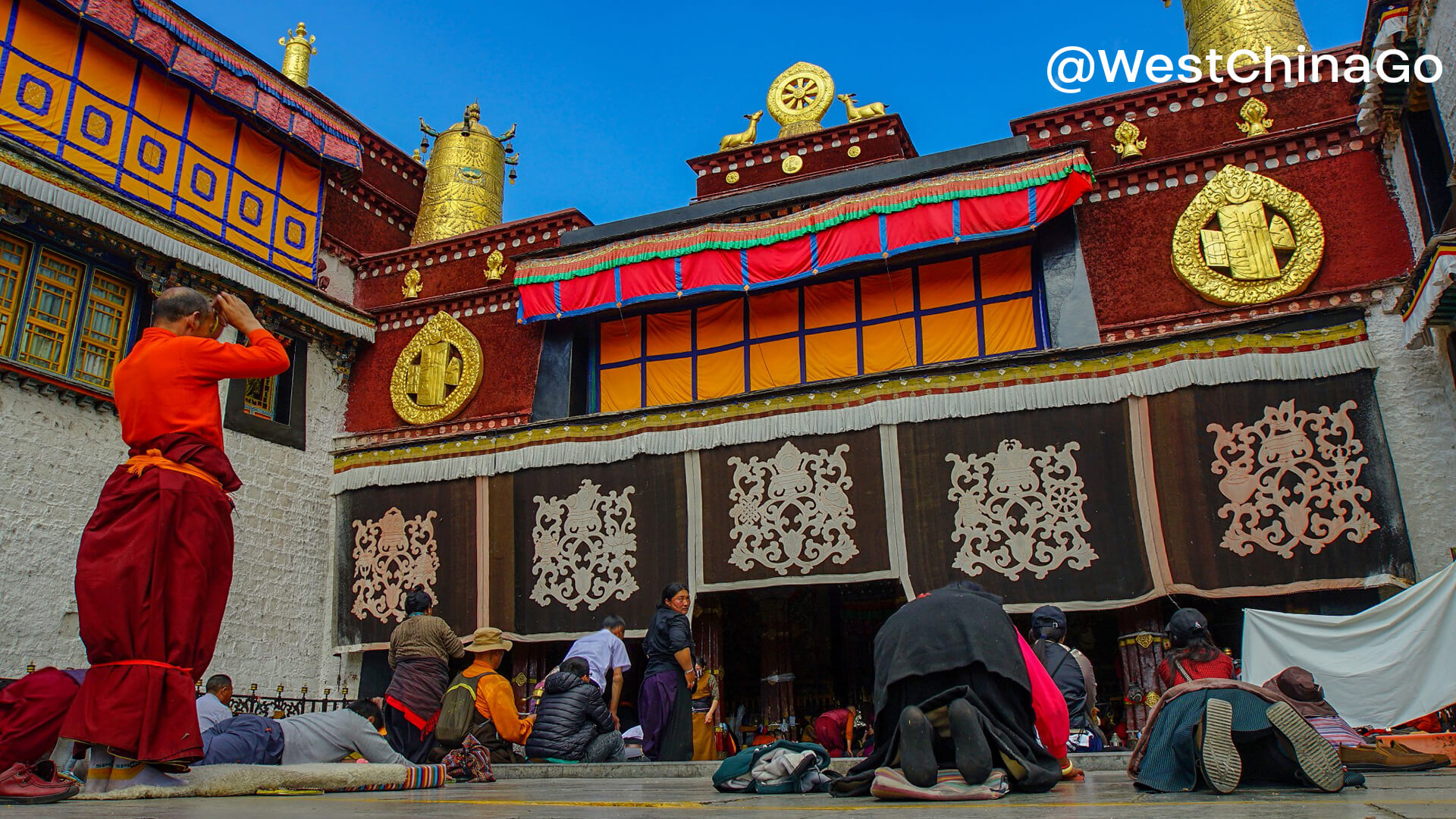
Jokhang Temple Tourist Map
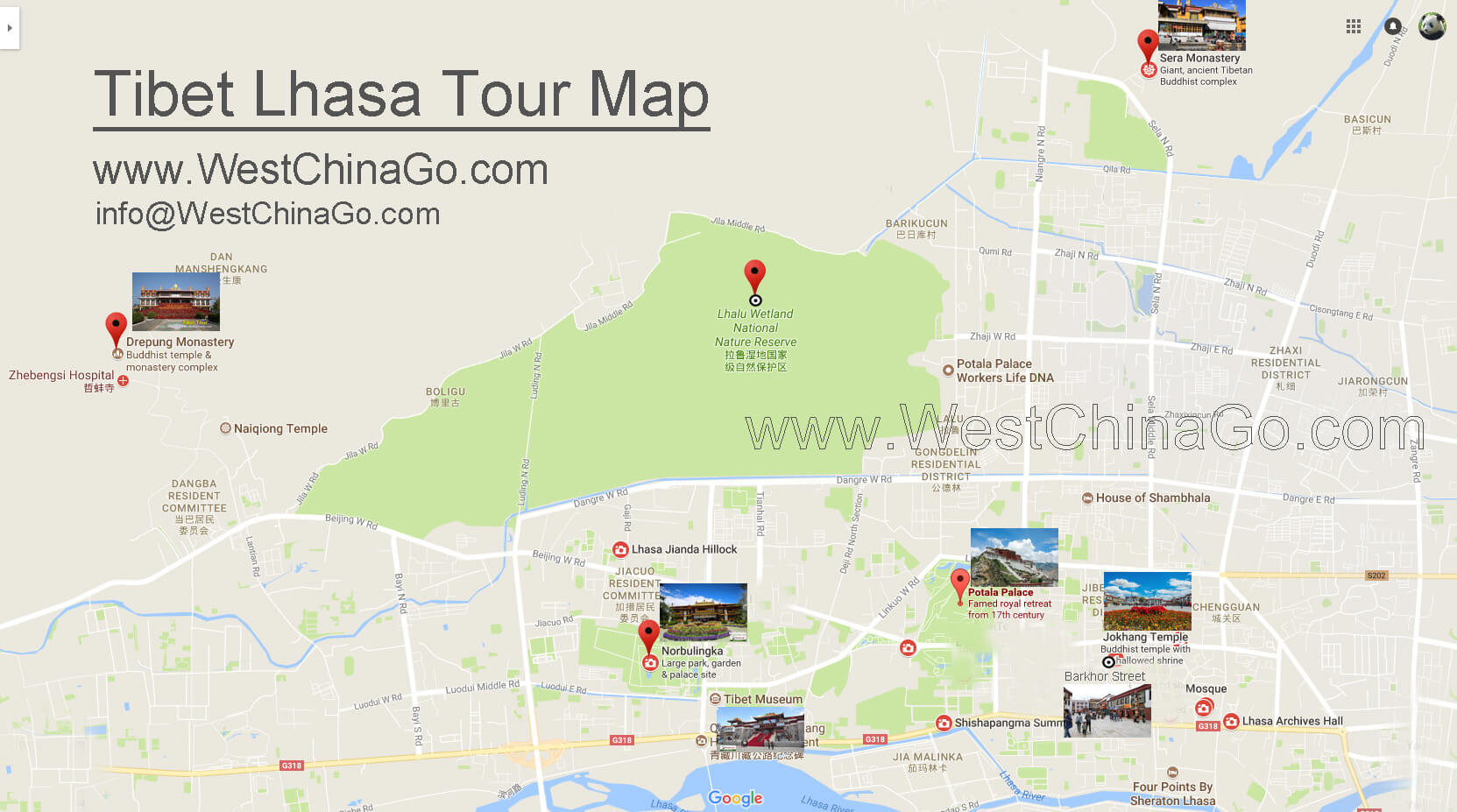
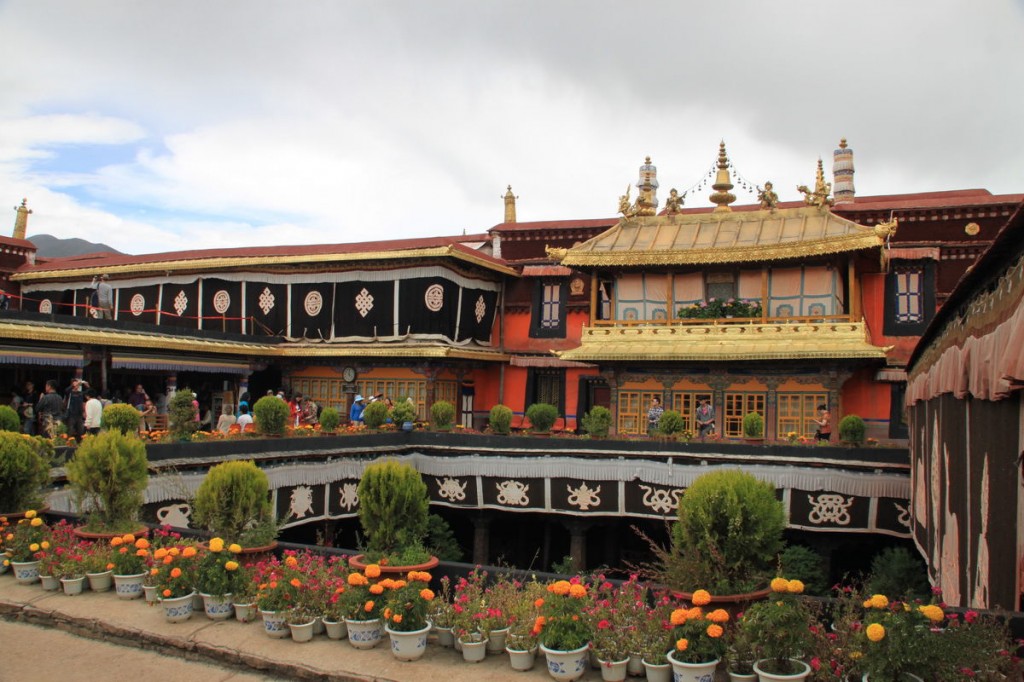
Jokhang Temple Travel Guide
Tour Route:
After entering the Jokhang Temple along the main entrance, there is a patio-style courtyard. There are several rows of butter lamps on the east side of the courtyard. Because believers add butter every day, they are not extinguished all year round. Behind the butter lamp is the main entrance of the main hall of the Jokhang Temple. On the left side of the entrance is the founder of the Red Sect, Padmasambhava, and on the right side is Jamba Buddha, Maitreya Buddha, also known as the future Buddha. On the right wall are murals about the story of the construction of the Jokhang Temple. The main content is the appearance of the Potala Palace in the 7th century and the scene of filling the lake to build the Jokhang Temple.
In clockwise order, it used to be a Buddhist hall dedicated to Master Tsongkhapa, the founder of the Yellow Sect, and his eight disciples. Continue to go around to the right and pass through the Yasha Hall and Dragon King Hall on both sides. Behind hundreds of butter lamps is the famous “Juekang” Hall. It is not only the main body of the Jokhang Temple, but also the essence of the Jokhang Temple. In the center of Juekang Hall is the Great Sutra Hall, which is the place where lamas chant scriptures and practice on weekdays. There are many small Sutra halls around. The twelve-year-old golden statue of Kyamuni is the core of the Jokhang Temple and a holy place for pilgrims.
Next to the courtyard, there are stairs leading to the second and third floors. On the second floor, there is the Dharma King Hall dedicated to King Songtsan Gampo, Princess Wencheng, and Princess Chizun, and the Bandanlam Dharma Protector Temple dedicated to the auspicious Heavenly Mother. Standing on the wide terrace on the second floor, you can overlook the Potala Palace, which is an excellent location for taking pictures. The golden roof on the third floor is also one of the highlights of the Jokhang Temple, but most of the time the third floor is closed to the public. In case of a coincidence, you can climb to the third floor. The four magnificent golden roofs are amazing.
Tibet has strong ultraviolet rays, and many tourists wear sun hats, sunglasses, and hold cameras. When visiting the inner temple, you need to take off your sunglasses and hat. Of course, you are not allowed to take pictures.
If a Tibetan passing by or kneeling down and bumps into you, don’t be afraid. They don’t have any malice, but they simply focus on worshipping Buddha and don’t care about other etiquette.
Never take pictures, taking pictures will arouse their disgust
